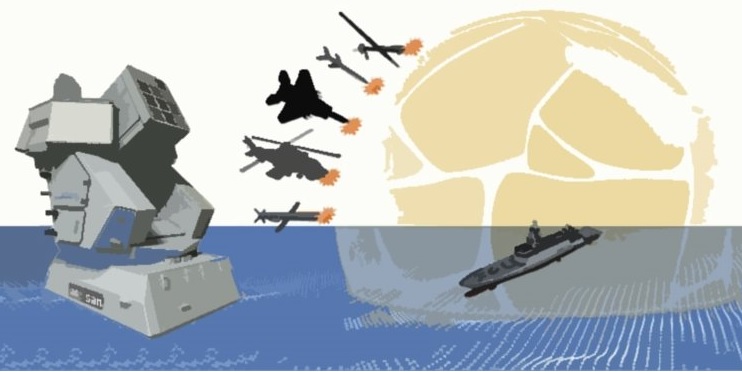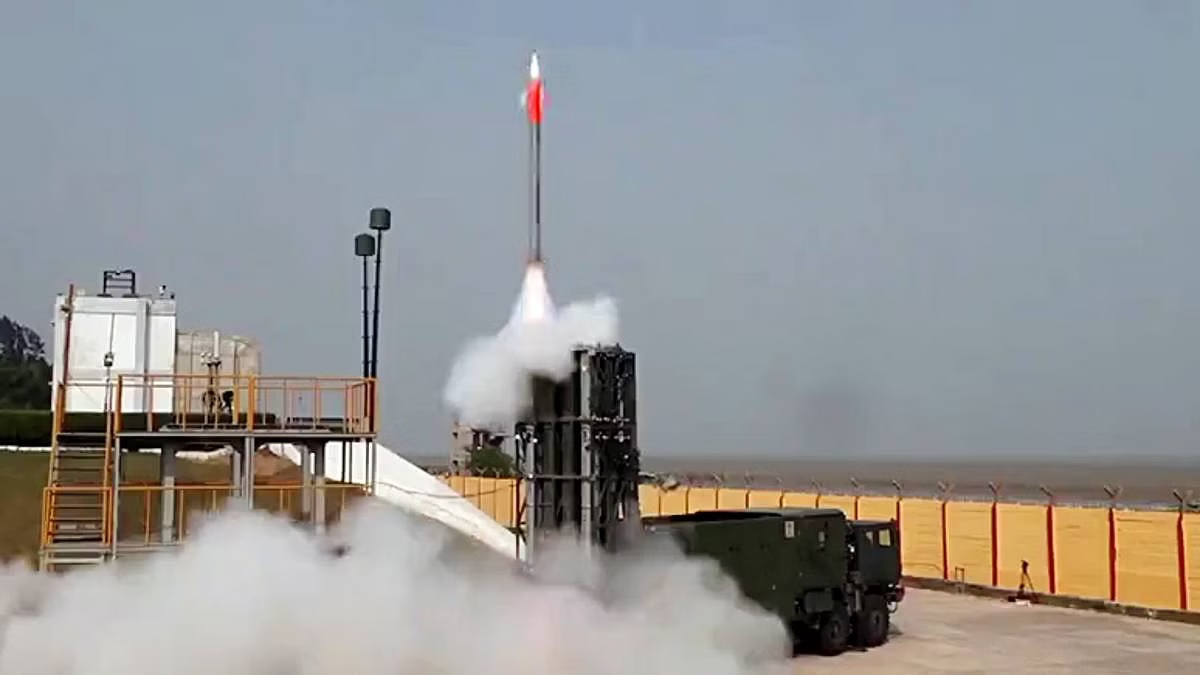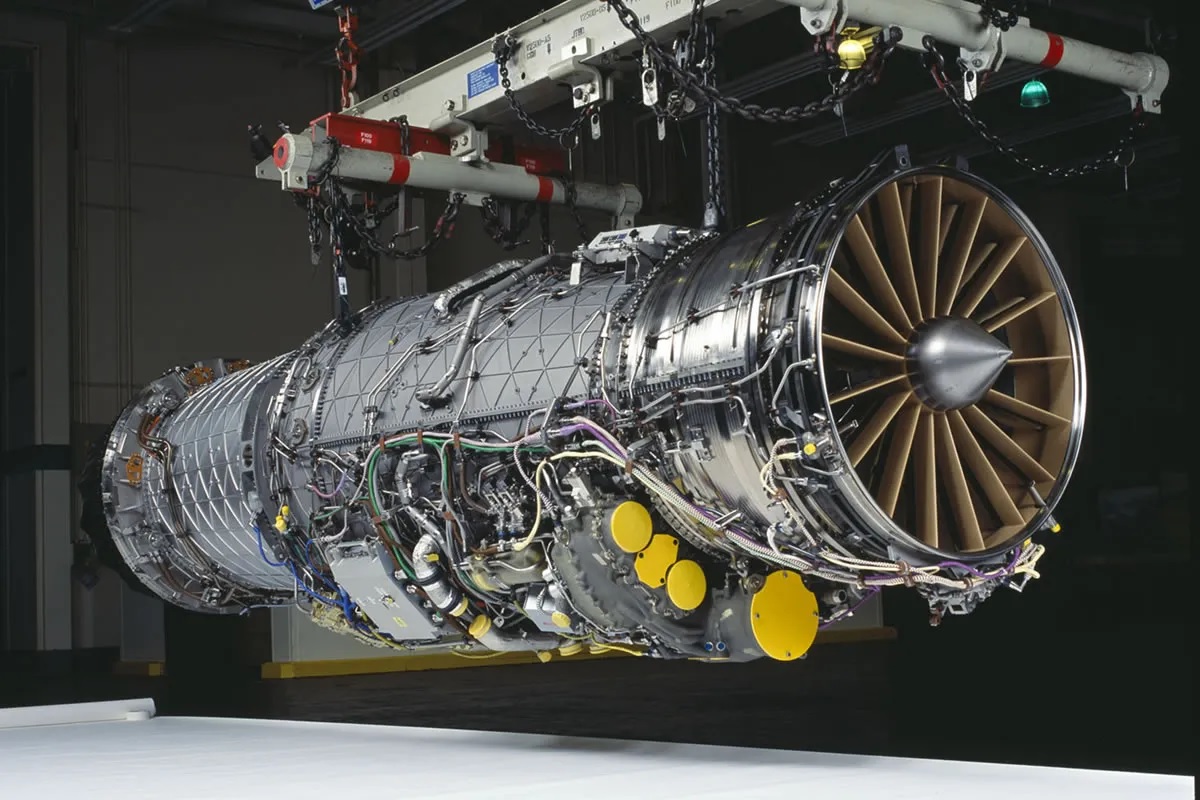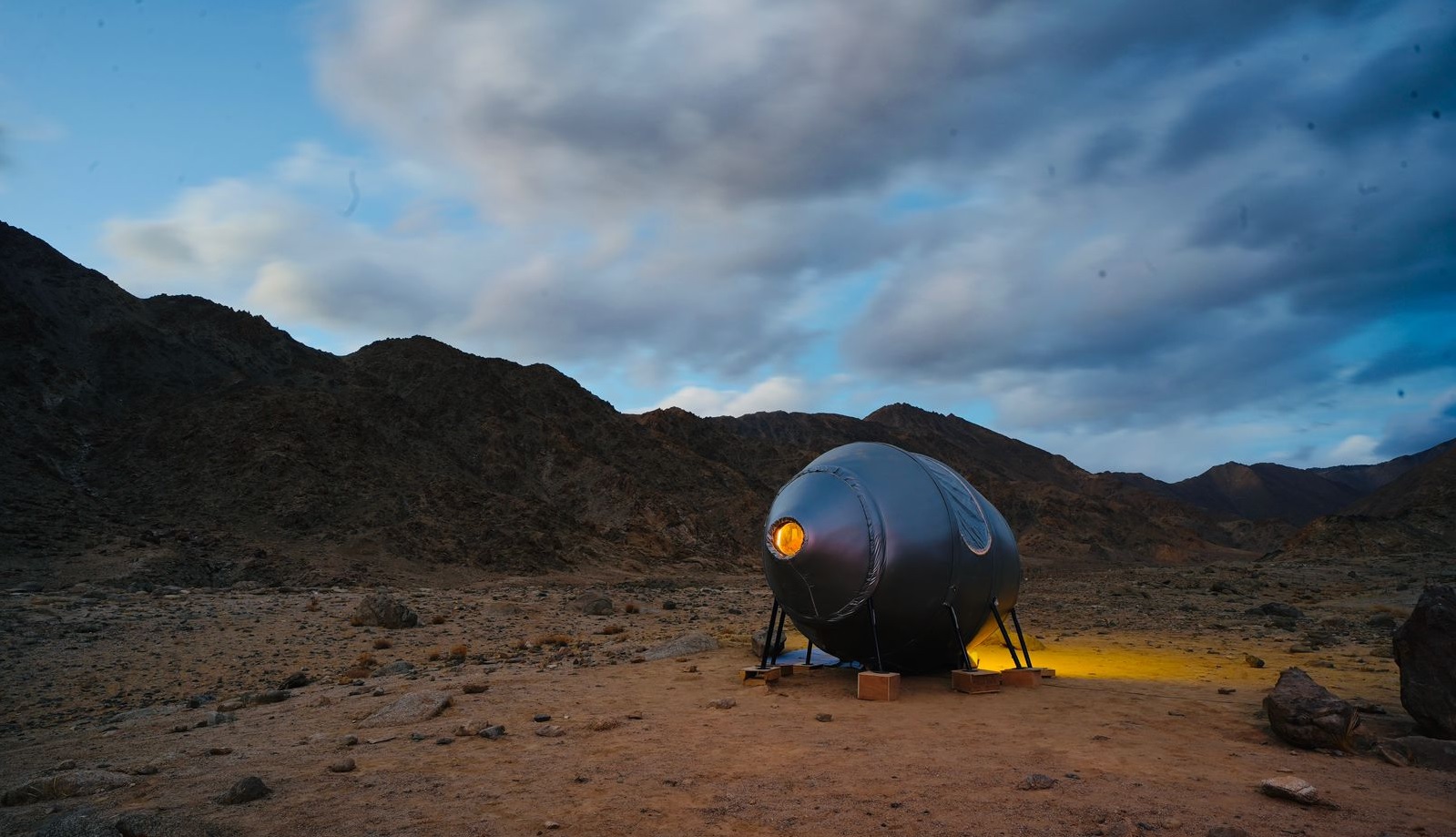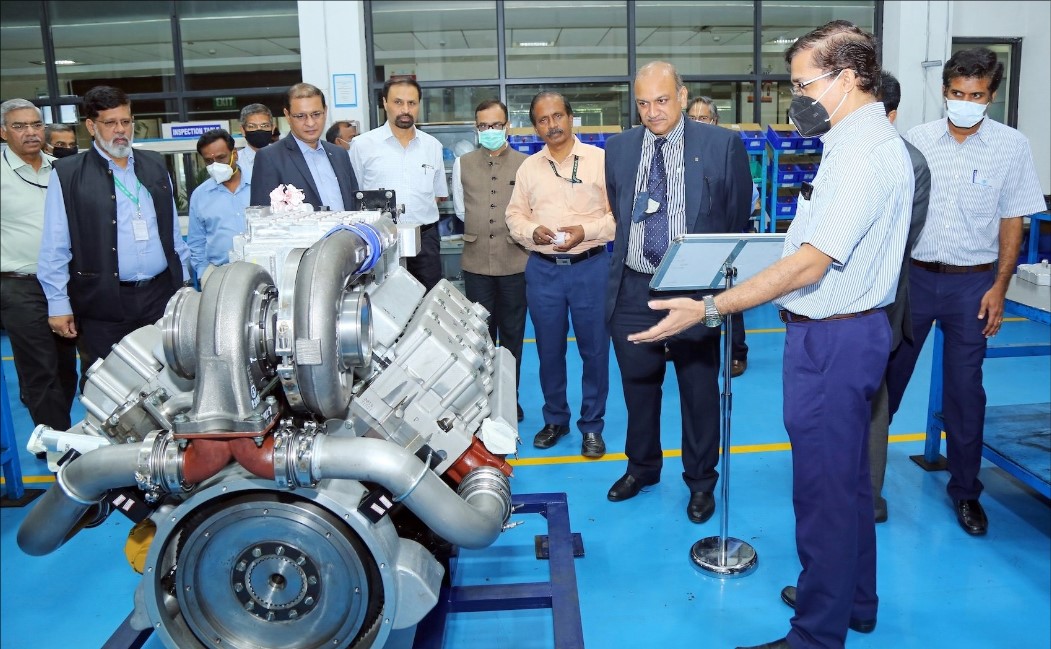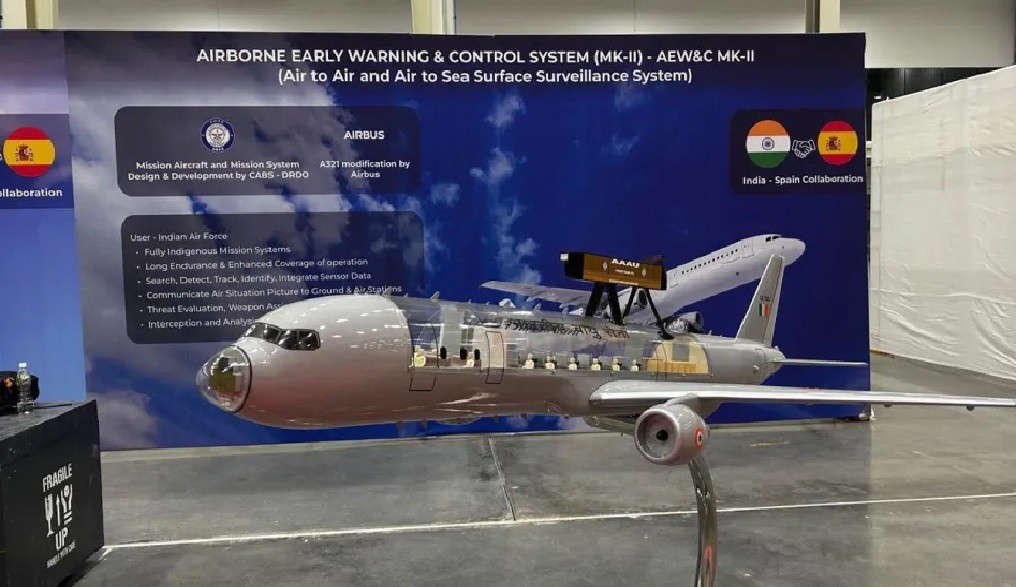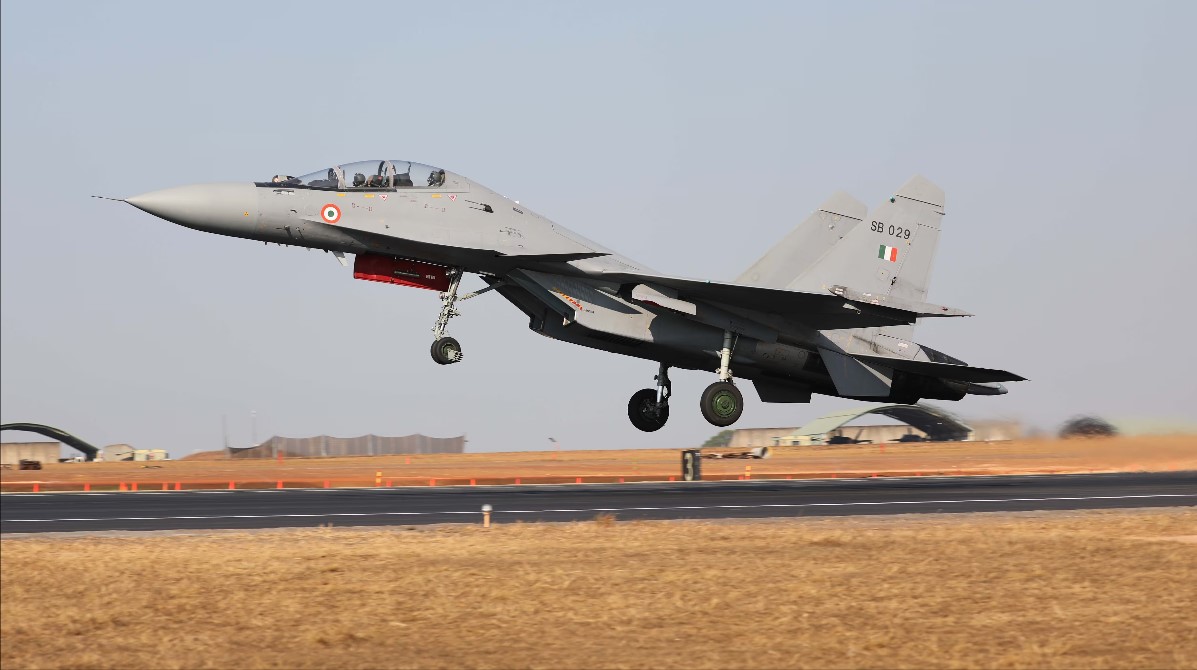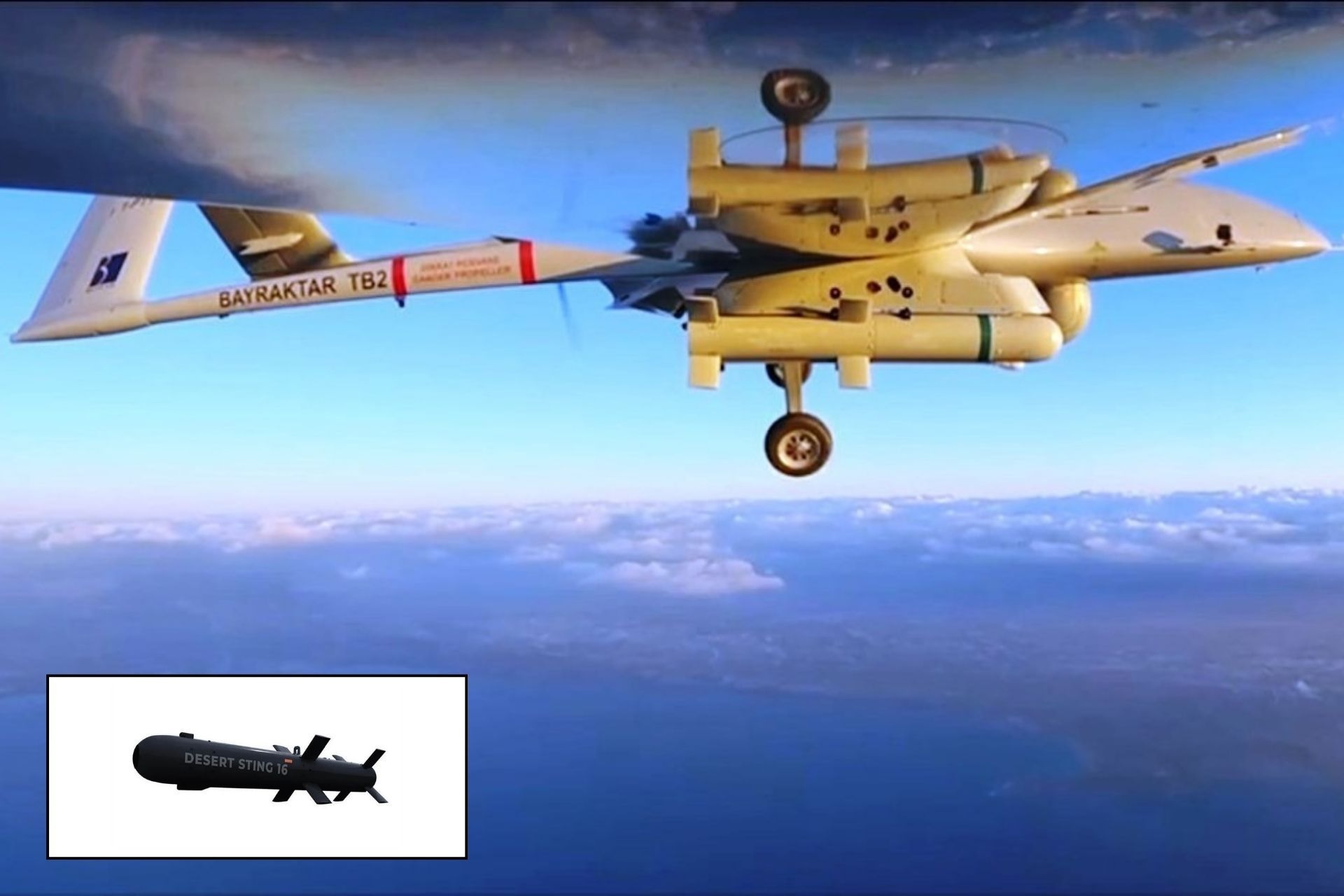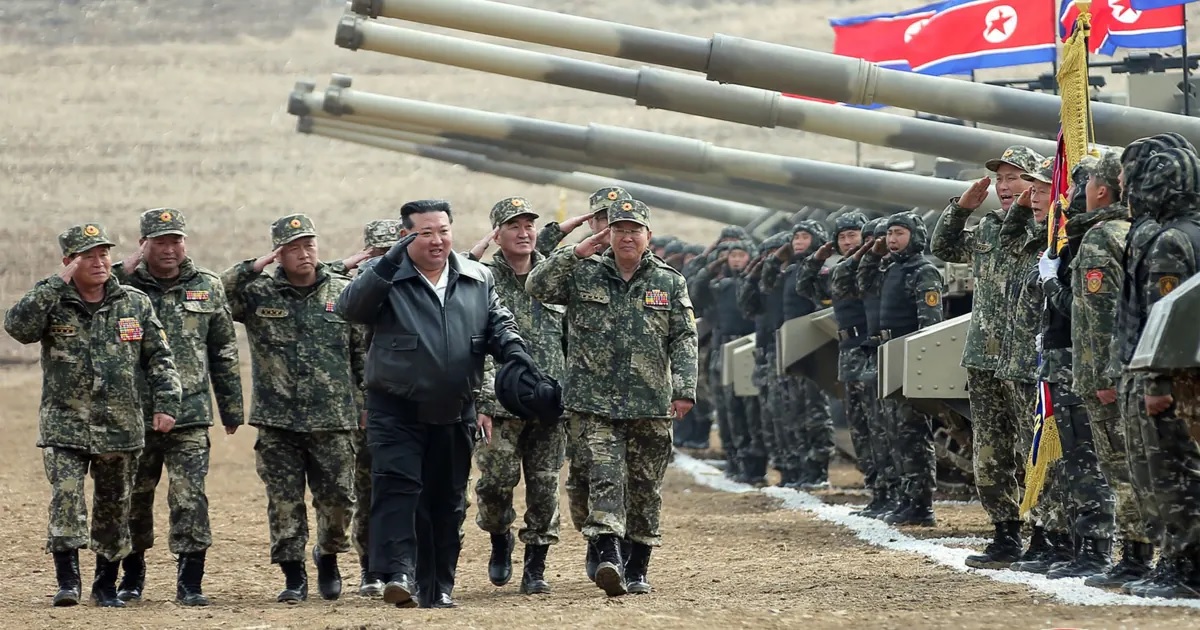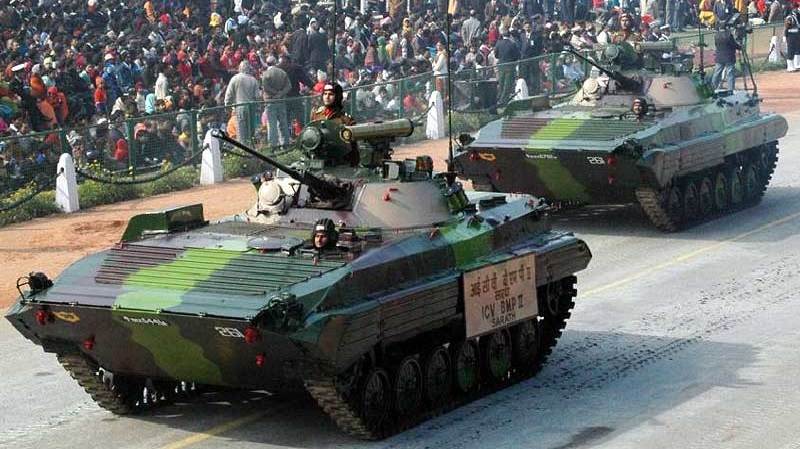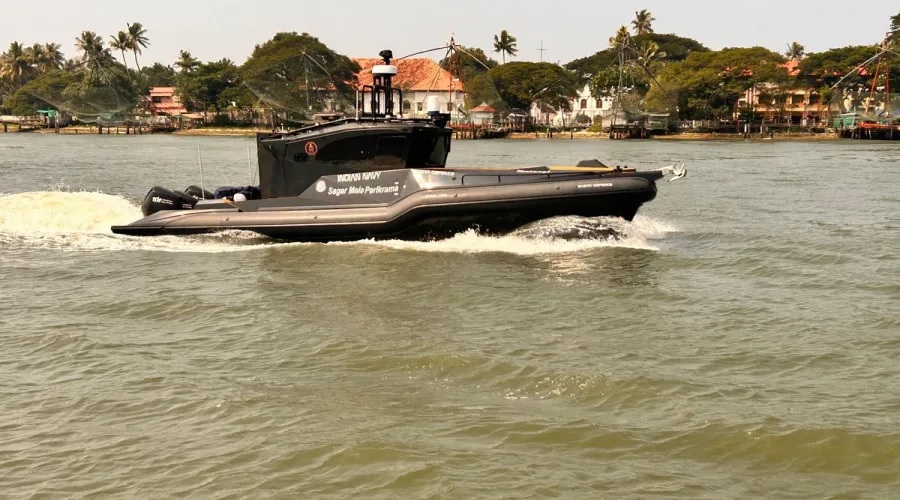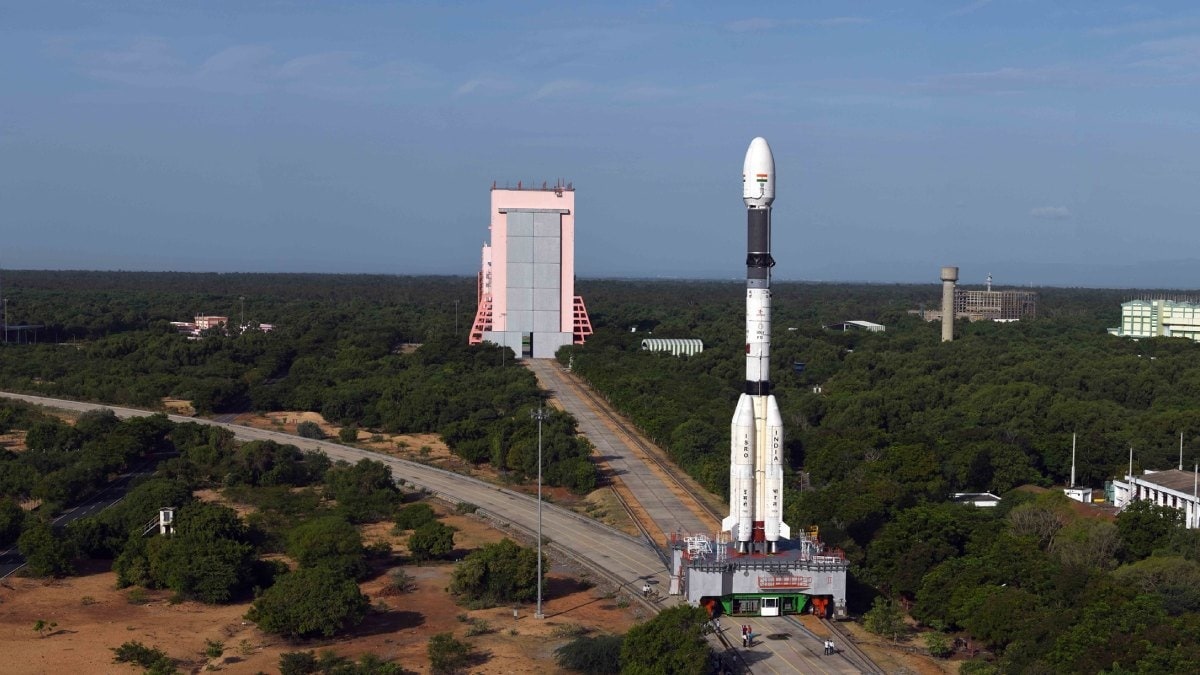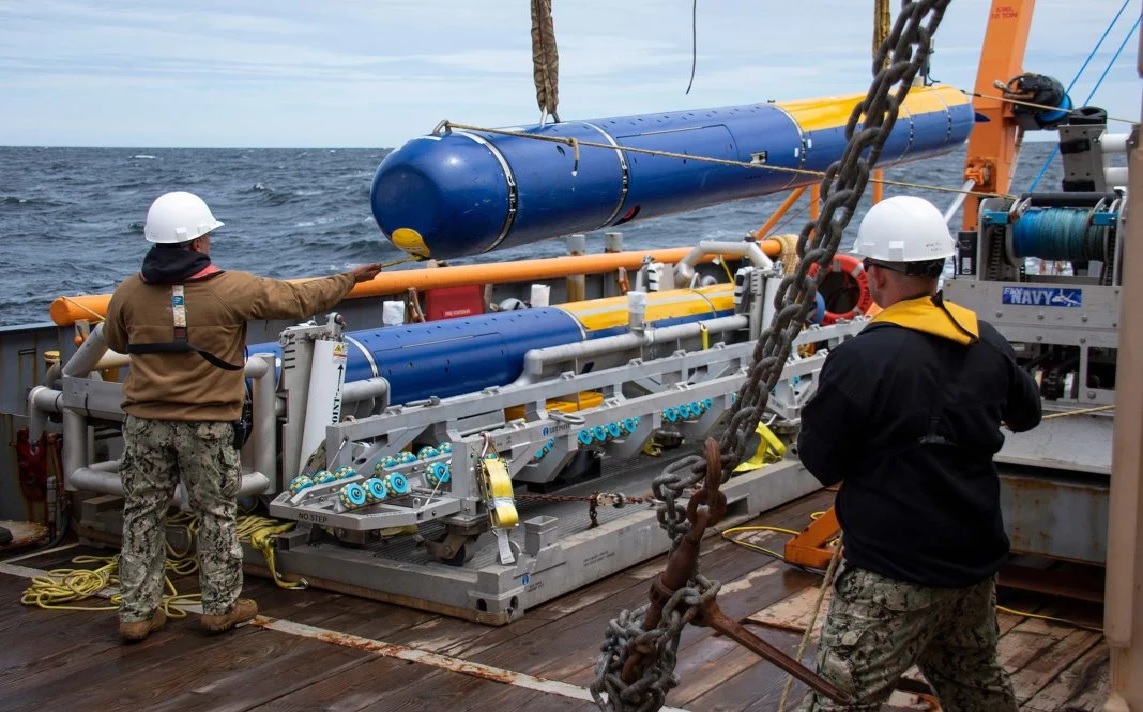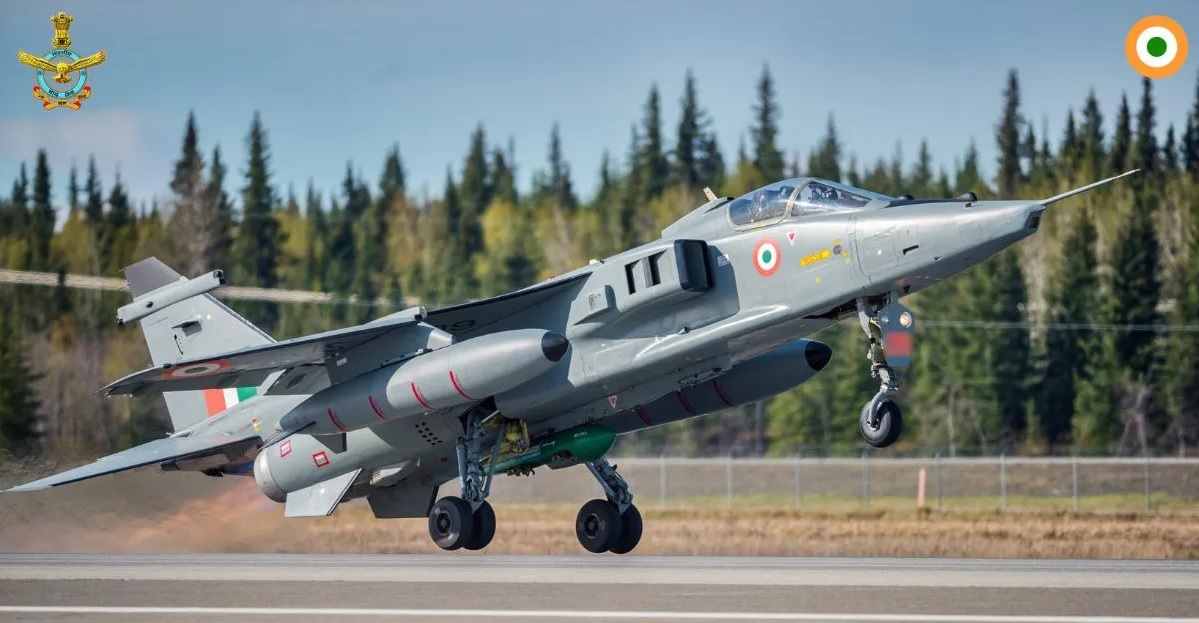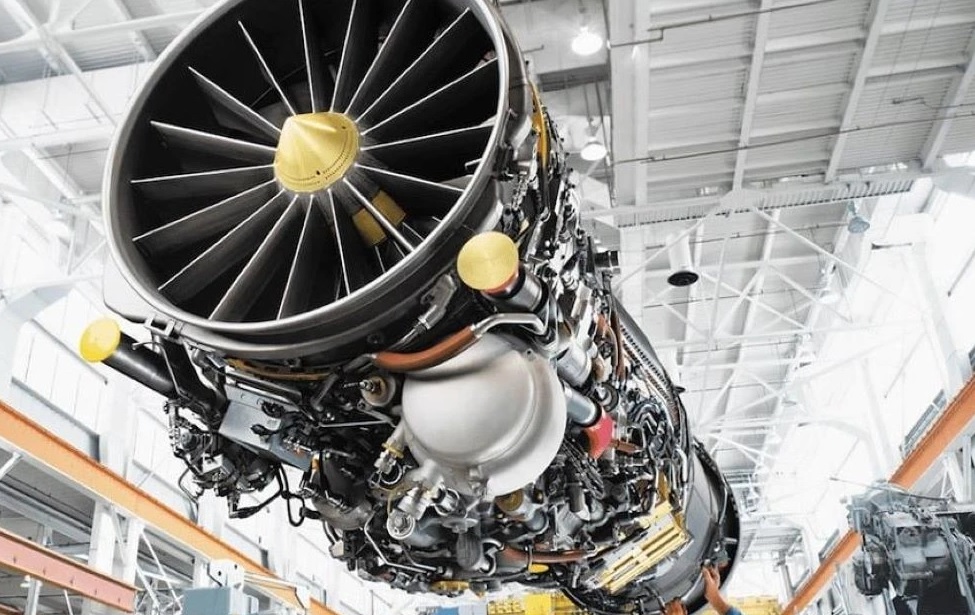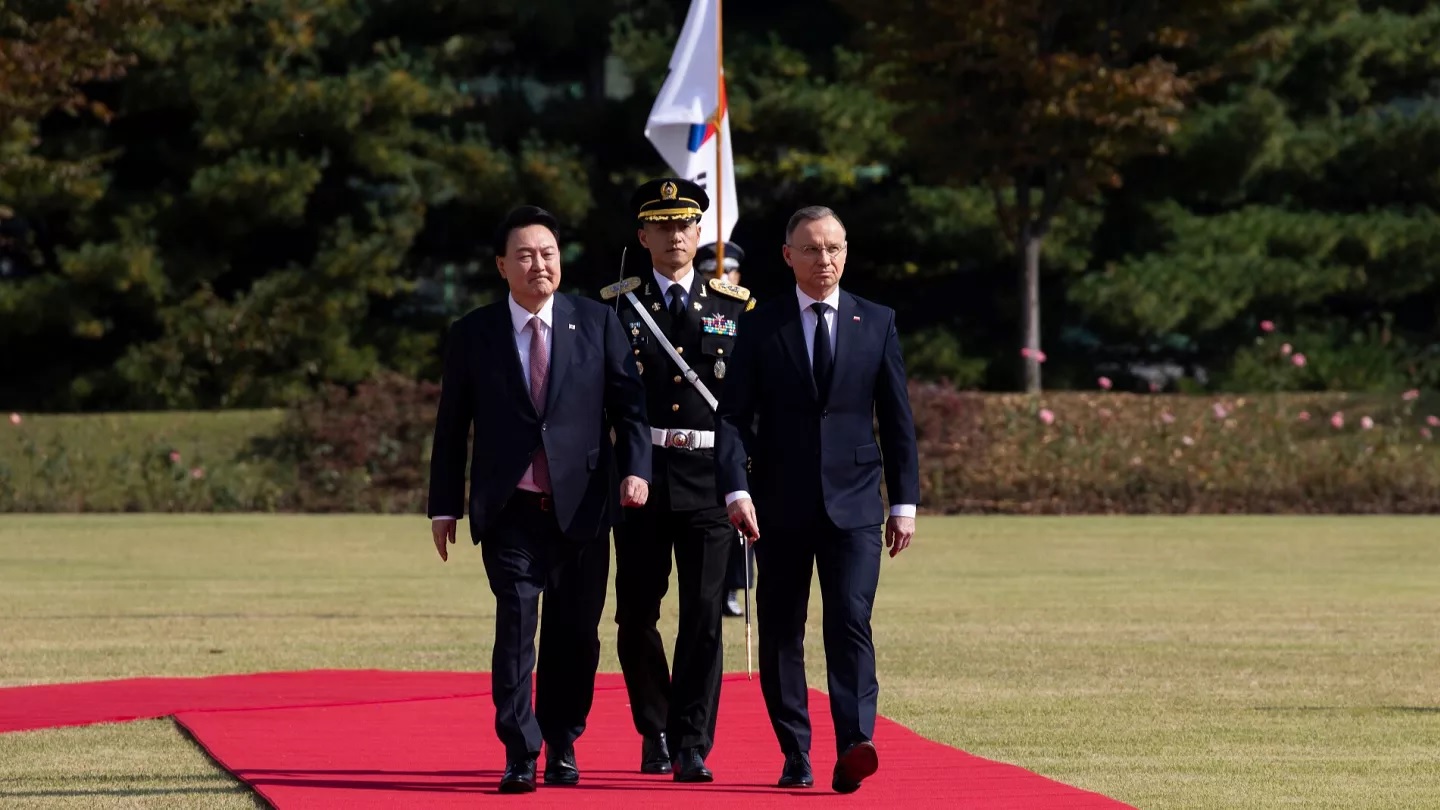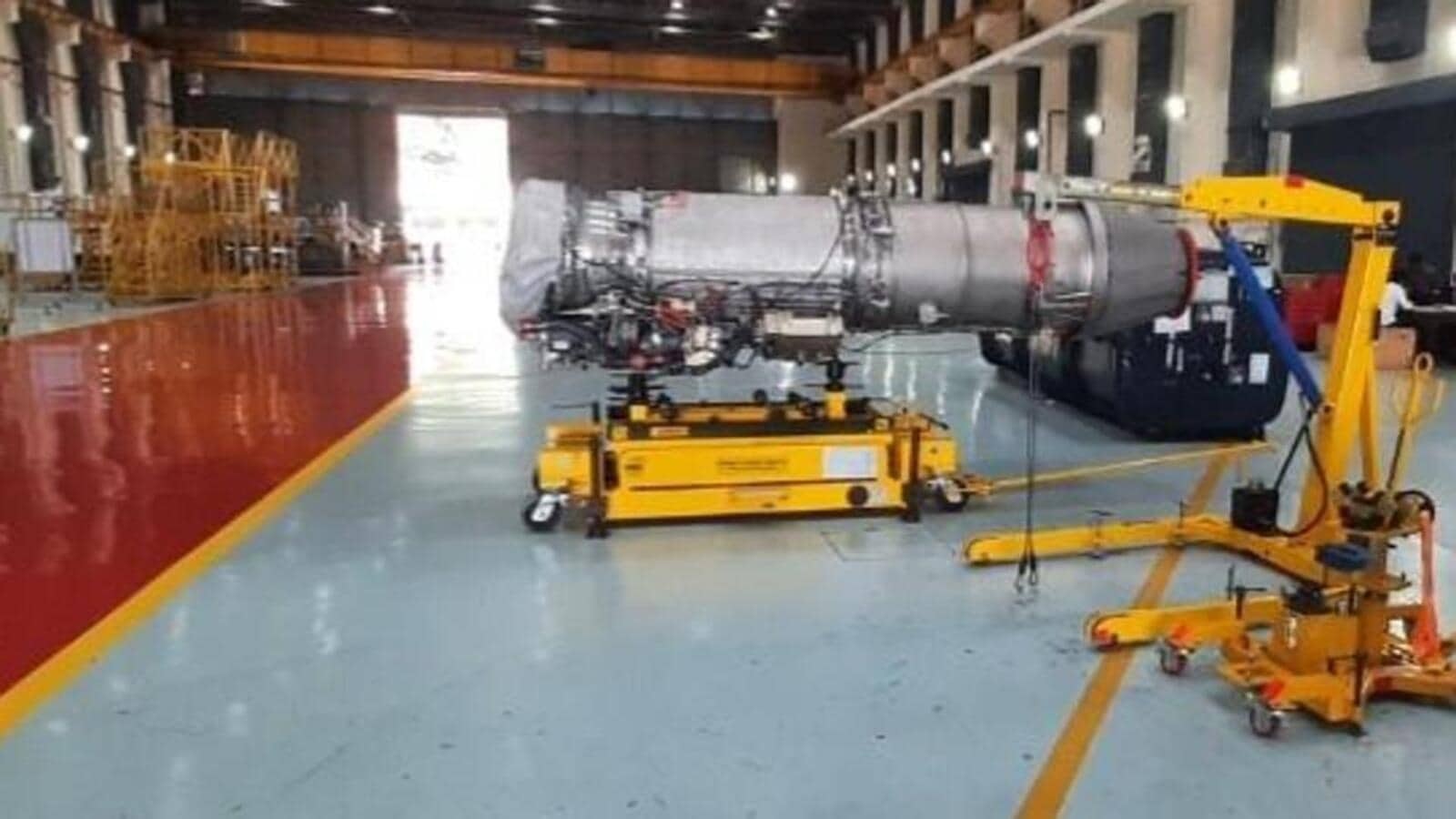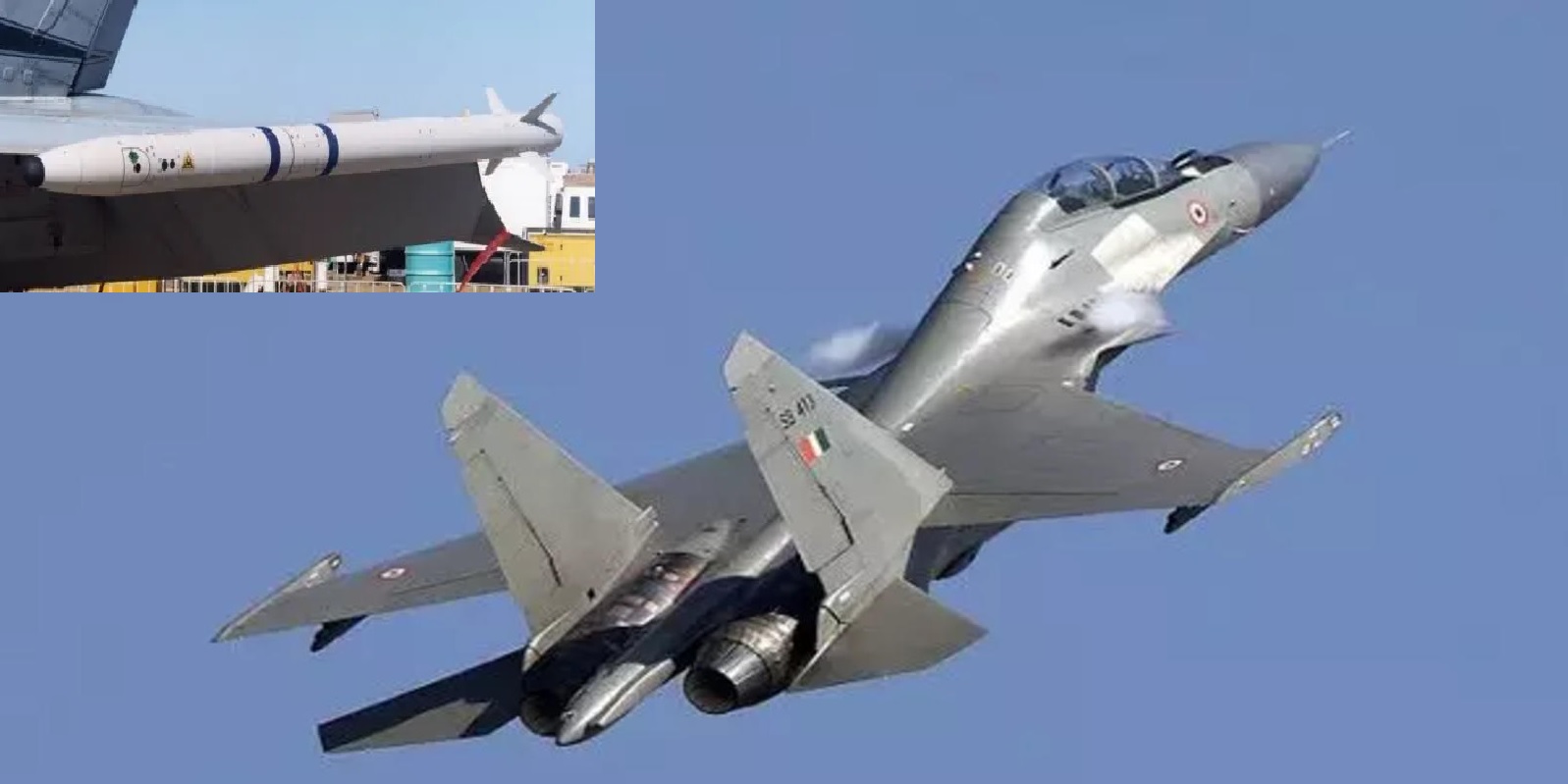World
ASELSAN, Türkiye's leading defence technology innovator, is setting new standards in naval defence with the launch of its upgraded GÖKSUR Point Defence Missile System (PDMS), known as the GÖKSUR 100-N. The system will make its debut at Euronaval 2024 in Paris, where international maritime and defence companies gather to unveil the latest advancements in naval technology. Running from November 4 to 7, the event provides a fitting stage for ASELSAN to showcase the GÖKSUR 100-N, a missile system designed to meet modern naval threats with unmatched agility, versatility, and technological sophistication.The GÖKSUR 100-N features an impressive 20-missile launcher capacity and can accommodate ASELSAN’s advanced GÖKSUR IIR missile. Originally designed as an air-to-air missile, the GÖKSUR IIR has been specially adapted for naval use, allowing it to intercept multiple types of threats with high precision. This updated system offers a 360-degree engagement capability, meaning it can detect, track, and neutralize incoming threats from all directions, an essential feature for naval vessels in unpredictable and high-risk maritime environments. One of the standout features of the GÖKSUR 100-N is its ability to deploy quickly in challenging sea conditions, making it a reliable choice for various naval operations. The missile system’s advanced turret stabilization technology allows the launcher to maintain accuracy and stability even in rough waters, providing vessels with consistent defence capabilities regardless of environmental challenges. Enhanced with artificial intelligence (AI) capabilities, the GÖKSUR 100-N optimizes threat detection, recognition, and engagement. This AI-powered feature ensures rapid responses by analyzing the nature of threats and adjusting interception parameters, offering a significant boost in both operational flexibility and situational awareness. Additionally, the system includes a mid-course guidance feature, which enhances precision and interception capabilities during missile flight, allowing for mid-mission adjustments to ensure maximum accuracy.ASELSAN has also expanded the GÖKSUR 100-N lineup to cater to various defence requirements. For example, the GÖKSUR 100-N VLS (Vertical Launcher System) variant offers a vertical deployment option, an advantage for vessels with specific space or structural requirements. The GÖKSUR 100-N/StA configuration, designed as a standalone turret, provides a modular solution that can be integrated into vessels of different sizes and classes, offering more flexibility to navies worldwide. Each configuration is tailored to specific operational needs, allowing navies to select the most suitable system for their fleet’s unique requirements.In addition to unveiling the GÖKSUR 100-N, ASELSAN’s display at Euronaval 2024 will feature a comprehensive suite of naval defence technologies, further underscoring the company’s commitment to maritime security. This includes the GÖKDENİZ Close-In Weapon System, MARLİN Unmanned Surface Vehicle, DÜFAS Low-Frequency Active Sonar System, and DERİNGÖZ Autonomous Underwater Vehicle. This full array of technologies showcases ASELSAN’s dedication to pushing the boundaries of naval defence and underscores the company’s strategy to lead in advanced, integrated defence solutions for the naval sector.ASELSAN’s CEO, Ahmet Akyol, emphasized the importance of Euronaval 2024 for expanding ASELSAN’s international footprint and fostering collaborative opportunities. “We are excited to showcase our expertise in naval defence technology at EURONAVAL and introduce the new version of our GÖKSUR Point Defence Missile System,” Akyol stated. He noted that ASELSAN’s ongoing innovations not only strengthen Türkiye’s defence capabilities but also enhance the company’s role as a significant player in global defence.Through Euronaval 2024, ASELSAN aims to strengthen existing partnerships and explore new collaborations, reflecting the company’s ambition to contribute to global security by providing versatile, high-performance defence solutions.
Read More → Posted on 2024-11-02 14:45:23India
The Indian Air Force (IAF) is making a transformative shift in its air defense strategy, moving away from its reliance on Russian S-400 Triumf systems to prioritize the development of its own indigenous air defense project, known as Project Kusha. This ambitious endeavor aims to establish 10 new squadrons of advanced long-range interceptor missiles, showcasing India’s growing commitment to self-reliance in defense.Challenges with the S-400 and Strategic Shift to Project KushaIndia initially ordered five squadrons of the S-400 Triumf system, a highly regarded Russian long-range surface-to-air missile defense platform. The S-400, known for its formidable range of up to 400 kilometers and ability to intercept multiple types of aerial threats, including ballistic missiles, fighter jets, and drones, significantly enhanced India’s defensive capability. However, as of today, India has received only three of the ordered five squadrons, with the remaining two delayed indefinitely due to Russia’s ongoing conflict with Ukraine. This delay has impacted Russia’s entire defense production and supply network, prompting the IAF to reevaluate its dependence on foreign systems.With Russia’s defense supply lines compromised, and the uncertainty surrounding future S-400 deliveries, the IAF has decided against pursuing local manufacturing of the Russian system. Instead, it’s now fully committed to Project Kusha, an in-house effort led by India’s Defence Research and Development Organisation (DRDO) to establish a powerful and self-sufficient air defense network. This shift marks a strategic alignment with India’s Atmanirbhar Bharat (Self-Reliant India) mission, designed to reduce dependence on foreign defense technologies.Project Kusha: The Core of India’s Future Air DefenseProject Kusha promises to revolutionize India’s air defense capabilities by developing three specialized long-range interceptor missile systems, each optimized to neutralize a diverse range of aerial threats. Expected to span multiple variants, these missiles will serve as India’s primary defense against high-altitude and long-range threats, including ballistic missiles, fighter aircraft, and cruise missiles.Though specifics of the missile types under Project Kusha remain confidential, the IAF has hinted that these new interceptors will incorporate state-of-the-art features. These may include:Multi-target Engagement: The ability to lock onto and intercept several incoming threats simultaneously, much like the multi-target capabilities of the S-400.Advanced Radar and Tracking: Sophisticated radar systems are planned, enabling precise, real-time tracking of fast-moving threats, even those employing evasive maneuvers or low radar profiles.Robust Electronic Countermeasures: Equipped with advanced electronic counter-countermeasures (ECCM), these interceptors will resist jamming and other electronic warfare techniques, maintaining accuracy under adverse conditions.Extended Range: While not officially confirmed, speculation suggests that Project Kusha's missiles may have ranges close to or potentially exceeding those of the S-400, allowing comprehensive protection over vast airspaces.These missiles are expected to be versatile enough to integrate seamlessly with India’s existing air defense platforms, such as the Akash Surface-to-Air Missile (SAM) system and the Medium-Range Surface-to-Air Missile (MR-SAM) system. As part of the indigenous network, Project Kusha will complement the capabilities of the already inducted S-400 squadrons, further strengthening India’s layered air defense framework.Geopolitical Factors Influencing India’s Air Defense StrategyApart from technical considerations, Project Kusha also addresses significant geopolitical issues. India’s reliance on Russian defense technology, like the S-400, has placed it at risk of potential sanctions from the United States under the Countering America’s Adversaries Through Sanctions Act (CAATSA). By moving toward a more self-reliant defense strategy, the IAF seeks to reduce such vulnerabilities, enhancing India’s strategic autonomy and its ability to balance complex international relationships.The Road Ahead: Trials and Operational OutlookProject Kusha is well into its developmental phase, with field trials expected to begin in the near future. Given the project’s importance, it’s anticipated that the trials will be rigorous, with each missile system tested for reliability, target accuracy, and resilience against various threats.Once fully operational, Project Kusha’s 10 squadrons are expected to become a formidable part of India’s air defense grid. With these capabilities, India will be better equipped to counter evolving threats, ensuring comprehensive coverage over Indian airspace.India’s Push for Defense Self-RelianceAs global defense dynamics continue to shift, India’s move to focus on indigenous systems is a clear indication of its aspirations for self-sufficiency and resilience. Project Kusha not only strengthens India’s military readiness but also aligns with its broader national goals for technological independence and geopolitical flexibility. In pursuing an advanced, homegrown air defense network, India is paving the way for greater security and stability in a region marked by fast-evolving strategic threats.
Read More → Posted on 2024-11-02 14:39:14India
India and France are advancing their strategic defense collaboration with plans to co-develop a sophisticated combat jet engine, a critical component for India's upcoming Advanced Medium Combat Aircraft (AMCA), envisioned as a fifth-generation fighter jet. Talks on this ambitious project, focused on both technical and industrial partnership, are expected to take off by the end of this year. The agreement marks an important milestone in the Indo-French defense alliance, positioning India to harness French expertise in aeronautics while significantly bolstering its defense self-reliance under the Atmanirbhar Bharat initiative.The Vision for Indigenous CapabilityThe agreement, centered on full-scale technology transfer, would see French aerospace powerhouse Safran collaborate closely with Indian counterparts, particularly the Gas Turbine Research Establishment (GTRE), in all phases of jet engine development—from design and development to certification and production. The promise of 100% technology transfer goes beyond mere assembly, allowing Indian engineers to gain firsthand expertise in a field that has historically presented numerous challenges for the country, as evidenced by the setbacks in the Kaveri engine project. This comprehensive transfer includes critical Intellectual Property Rights (IPR), giving India the freedom to innovate and modify the technology as needed, an essential element for ongoing development and enhancement of indigenous defense technologies.Strategic Context and International PartnershipsThe jet engine project is part of a broader Indo-French defense partnership that covers a spectrum of other high-value military projects. Among these is the collaboration on heavy-lift helicopters under India’s Multi-Role Helicopter (IMRH) program. This growing alliance underscores India and France's shared commitment to enhancing their defense manufacturing ecosystems, ensuring that both nations remain at the forefront of military innovation.The importance of this collaboration has been underscored in recent high-level discussions between Indian Prime Minister Narendra Modi and French President Emmanuel Macron, showcasing it as a cornerstone of India’s strategic vision in military technology. France's involvement aligns with India’s objectives to reduce its dependence on foreign defense imports and to emerge as a prominent player in global defense exports. The technology transfer from Safran can enable India to establish an aerospace foundation robust enough to eventually support other defense partnerships and export opportunities.Transformational Impact of Safran’s Technology TransferThe potential for local job creation and workforce upskilling is one of the most immediate advantages of this collaboration. Safran’s involvement will establish domestic manufacturing capabilities, engage local firms, and create a skilled workforce capable of meeting the complex demands of aeronautical R&D. It also reinforces India’s ambition to create a world-class aerospace industrial base, encouraging Indian companies to contribute to high-value manufacturing and cutting-edge research and development.The project also supports India's ambition to independently produce advanced military hardware. By empowering Indian companies to take on various roles in the supply chain, it opens doors for them to participate in more high-stakes projects. This collaborative ecosystem of local suppliers, manufacturers, and skilled professionals will, over time, contribute to India's growing stature in the global defense industry.Boosting National Security and Military AutonomyA successful joint development of the AMCA jet engine could dramatically advance India's defense capabilities, allowing it to meet specific operational requirements without relying on external suppliers. Safran's expertise in turbofan engine technology, combined with India’s commitment to innovation, will facilitate the development of an engine that not only meets high performance and durability standards but is also capable of supporting the advanced combat systems required by fifth-generation fighter jets.Moreover, the collaboration reinforces India's focus on national security and defense autonomy by ensuring that future generations of fighter jets, such as the AMCA, are equipped with domestically developed engines tailored to Indian operational needs. This capability would be instrumental in bolstering India’s deterrence power and elevating its defense stature within Asia and globally.Toward a Stronger Defense Manufacturing FutureThis partnership, which bridges French technological expertise and India’s manufacturing potential, promises far-reaching benefits. If successful, it can transform India's aerospace capabilities, elevate its defense manufacturing ecosystem, and help fulfill the vision of Atmanirbhar Bharat. The project’s long-term impact includes creating a model for international defense collaboration that doesn’t just focus on manufacturing but on meaningful knowledge transfer—one that empowers India to take charge of its defense technology needs for years to come.
Read More → Posted on 2024-11-02 14:33:57Space & Technology
In a groundbreaking stride towards preparing for future human space exploration, the Indian Space Research Organization (ISRO) has launched India's first analog space mission in Leh, Ladakh. This unique mission, set in the challenging terrain of the high-altitude desert, aims to simulate life in an interplanetary environment and to study the difficulties astronauts might face when living in extraterrestrial conditions. This simulation offers an essential step for ISRO as it aims to expand India’s reach in space exploration with missions to the Moon, Mars, and potentially further. Simulating Extraterrestrial Life with Hab-1 Central to this mission is a compact, inflatable habitat known as Hab-1, designed to mimic the structure and atmosphere of a space station beyond Earth. Hab-1 is built to be self-sustaining, equipped with key resources necessary for long-term survival in a space environment. The habitat includes a hydroponics farm, where fresh produce can be grown without soil, ensuring a continuous supply of nutrients. Alongside the farm, the habitat houses a kitchen and advanced sanitation facilities, creating a closed-loop ecosystem similar to what would be essential in an off-world habitat. This environment enables researchers to examine and refine the technological, logistical, and psychological elements critical for a space base far from Earth. Such insights are indispensable as ISRO gears up for long-duration missions under India’s ambitious Space Vision 2047, which includes the establishment of a Bharatiya Antariksha Station (BAS) by 2035 and plans for an Indian astronaut on the Moon by 2040. Why Ladakh? Mimicking Mars and the Moon Ladakh’s cold, arid climate, high altitude, and unique geological formations closely resemble the landscapes of Mars and the Moon. These conditions make Leh an ideal site for this analog mission, providing an Earth-based yet realistic testing ground for the interplanetary mission simulation. The location’s remote and extreme environment enables scientists to assess how equipment, habitats, and humans function under isolated and confined conditions. Throughout the mission, researchers will study a range of factors including power generation, mobility solutions, communication networks, and storage capabilities. This is critical for ISRO as the team tests various robotic equipment, vehicles, and essential infrastructure, all of which are necessary for supporting astronauts in an interplanetary habitat. Human Health and Psychological Insights An essential part of this mission is to observe how isolation and confinement impact human health and behavior. Extended stays in space pose a unique set of physical and psychological challenges, from muscle and bone density loss to mental stress caused by solitude. By creating these conditions in Hab-1, researchers can closely monitor how participants respond, thereby improving future mission protocols and support systems to ensure astronauts’ well-being during long-term space expeditions. A Collaborative Effort for India's Space Future This mission is a collaborative project led by ISRO’s Human Spaceflight Centre in partnership with AAKA Space Studio, the University of Ladakh, IIT Bombay, and with support from the Ladakh Autonomous Hill Development Council. The multi-organization effort exemplifies the inter-disciplinary approach needed for space exploration, bringing together experts from fields like engineering, biology, and psychology to prepare for the diverse requirements of human space missions. Advancing Space Exploration Technology and Knowledge India’s analog space mission marks an important chapter in preparing for human-robotic exploration. The findings from this mission will help ISRO assess the strengths, limitations, and feasibility of planned exploration systems, while also driving innovations in sustainable energy sources, resource storage, and other critical infrastructure required for human survival beyond Earth. The mission’s success could enhance ISRO’s role in international space exploration, opening new avenues for collaboration and technology sharing. As ISRO moves forward with the Space Vision 2047 roadmap, the success of this analog mission is a promising step toward achieving self-reliant human space exploration capabilities.
Read More → Posted on 2024-11-02 14:19:35India
India’s push for self-reliance in defence capabilities is taking a significant leap as the Combat Vehicles Research and Development Establishment (CVRDE), working with Ashok Leyland, has developed a 600 horsepower (hp) engine slated for testing on the WhAP 8×8 (Wheeled Armoured Platform). This indigenous engine has already cleared extensive lab testing and is now moving to real-world trials aboard the WhAP 8×8, a versatile armoured vehicle developed jointly by the Defence Research and Development Organisation (DRDO) and Tata Motors. The upcoming field tests will be a crucial step, potentially advancing India’s military vehicle programs and reducing reliance on foreign powertrains.The WhAP 8×8 Armoured Platform: Built for India's Diverse TerrainThe WhAP 8×8 is designed as an amphibious, multi-terrain vehicle suited to the needs of the Indian Army. It can navigate varied landscapes, from deserts and mountains to riverine environments, making it ideal for India’s diverse operational conditions. With robust armour and impressive mobility, the WhAP 8×8 is designed to safely transport troops and engage in combat, thanks to advanced onboard weaponry. Currently, the WhAP uses a 600hp Cummins engine, locally manufactured at Cummins’ Pune facility. This powerhouse enables the WhAP to tackle rugged terrain effectively, supporting combat and transport missions alike.Yet, the CVRDE and Ashok Leyland engine, once approved, could present a major upgrade by offering an alternative that’s not only homegrown but also tailored to the specific requirements of the Indian Army. This engine is set to power the WhAP while reducing the dependency on foreign engines, aligning with India’s “Make in India” initiative in the defence sector. This move also aligns with broader military modernization programs such as the Future Infantry Combat Vehicle (FICV), where indigenous powertrain options are crucial for operational flexibility and strategic autonomy.Key Specifications and Design of the New EngineThe new 600hp engine from CVRDE and Ashok Leyland is designed to meet demanding standards, with specifications aimed at maximizing performance under high-stress conditions typical of military operations. Known for its durability and optimized fuel efficiency, the engine is built with advanced cooling and filtration systems that enable it to function in both high-temperature zones and colder climates, which is crucial for an armoured platform that may be deployed anywhere within India’s diverse landscape. This rugged adaptability in harsh conditions and varied altitudes will provide the WhAP 8×8 with a stable, powerful drive regardless of environment.In addition, the engine is built with a focus on reducing overall maintenance requirements and extending operational life—a priority for vehicles deployed in remote areas. The high torque output of the 600hp engine also ensures that the WhAP 8×8 can carry heavy payloads and still maintain the agility needed to maneuver in combat situations.WhAP 8×8 in India’s FICV Program and Future ProspectsThe development of the CVRDE-Ashok Leyland engine is tied closely to India’s Future Infantry Combat Vehicle (FICV) program, an ambitious project to replace the outdated BMP series armoured vehicles currently in service. The FICV is designed to be a state-of-the-art armoured transport capable of engaging in combat while providing enhanced protection and transport for infantry troops. With the new 600hp engine’s power, efficiency, and agility, the FICV platform could become a versatile, next-generation option for the Indian Army’s ground forces.While initially aimed at the WhAP 8×8, the CVRDE-Ashok Leyland engine could serve as a baseline for additional armoured and utility vehicles across the Indian defence forces. Successful testing on the WhAP 8×8 could open doors for this engine to power future platforms, ensuring a standardization of indigenous powertrains in multiple vehicles. This will streamline maintenance, reduce logistical complexities, and, importantly, bring India closer to its goal of becoming self-reliant in defence production.The Road Ahead for Indigenous Defence PowertrainsThe deployment of the CVRDE-Ashok Leyland 600hp engine is more than just an addition to India’s military vehicle arsenal; it’s a statement of the country’s intent to push forward with indigenous technologies. As real-world testing unfolds, the WhAP 8×8’s performance with this new powertrain will offer valuable insights into how well India’s domestic capabilities match up to international standards.
Read More → Posted on 2024-11-01 12:54:18India
India’s journey to modernize its airborne defence capabilities took a giant leap forward with the recent unveiling of the DRDO-Airbus NETRA AEW&C (Airborne Early Warning and Control) Mk2 model. Displayed during the inauguration of the new C295 aircraft final assembly line in Vadodara, the model represents India’s commitment to enhancing its surveillance and command infrastructure with state-of-the-art technology and international partnerships. The NETRA AEW&C Mk2 is no ordinary surveillance aircraft. It combines the latest in radar technology and airborne warning systems, purpose-built for the Indian Air Force (IAF). Designed as an upgrade over India’s existing NETRA Mk1 systems, the Mk2 model brings an impressive set of enhancements, beginning with its core radar: DRDO’s indigenous Uttam Active Electronically Scanned Array (AESA) radar. The Power of the Uttam RadarA standout feature of the NETRA AEW&C Mk2 is its incorporation of the Uttam AESA radar. Originally developed for the Tejas Light Combat Aircraft, the Uttam radar’s multi-target tracking capability is key to the Mk2's enhanced situational awareness. Known for its capacity to monitor and lock onto multiple targets at once, the radar can detect both airborne and maritime threats with high precision. This versatility significantly boosts the IAF’s defensive and offensive reach, offering a broader and more detailed scope of enemy activities across the operational theater.The Uttam radar is also versatile across weather conditions and can differentiate between friend and foe, a crucial advantage in modern warfare. With its electronically scanned array, the radar offers a broader field of vision compared to traditional mechanically scanned radars, helping Indian forces detect threats early and with minimal delay.Airbus A321: A Sturdy Platform for an Advanced SystemThe A321 aircraft itself, modified extensively to house this advanced AEW&C system, has been customized to carry the NETRA’s radar and support equipment while maintaining excellent performance and range. Airbus is conducting these structural modifications in its Spain facilities, where the aircraft is being equipped with essential subsystems to prepare it for AEW&C operations. Once these modifications are complete, the aircraft will return to India, where DRDO will perform the final integration of the Uttam radar and other indigenous components.These customizations enable the A321 to meet the needs of the NETRA system while also accommodating additional power sources and cooling systems for the radar and onboard sensors, which have considerable power demands. The Airbus platform thus becomes a high-endurance, long-range asset for surveillance and reconnaissance.Multi-Role and Enhanced Surveillance CapabilitiesThe NETRA AEW&C Mk2’s value extends beyond radar technology. This platform is equipped to operate as a mobile command center, directing both air and maritime operations and coordinating multiple platforms. With its advanced sensor systems, it can pinpoint the location of hostile aircraft, ships, and missiles, all while maintaining secure communications with other Indian assets. The Mk2 model thus plays a key role in joint operations by bridging data and communications among IAF and Indian Navy assets.The platform also features electronic intelligence (ELINT) and communications intelligence (COMINT) capabilities, collecting and analyzing signals from hostile forces and providing IAF commanders with invaluable intelligence. These advanced systems allow the NETRA Mk2 to function not only as an early warning system but as a comprehensive command-and-control center in the sky.Building a Fleet for the FutureIndia’s ambitious expansion of its airborne surveillance network is notable. The IAF is planning to add 12 AEW&C Mark-1A and Mark-2 platforms by the 2030s. These aircraft will join the current fleet of three NETRA Mk1 AEW&C systems and three Phalcon AWACS units, creating a formidable airspace monitoring network across the Indian subcontinent. This fleet expansion aligns with India’s goal of establishing a robust, self-reliant airborne surveillance capability capable of deterring and responding to any regional threats.Strategic Collaboration and Indigenous DevelopmentThe DRDO-Airbus partnership reflects India’s strategy to strengthen its indigenous defence manufacturing sector while harnessing the expertise of global aerospace leaders. The modifications undertaken by Airbus enable DRDO to implement the full suite of NETRA’s systems within a reliable and tested platform, reducing the program’s development time and enhancing its operational readiness. With the A321 platform’s proven reliability and the high-tech modifications from DRDO, the Mk2 model showcases the blend of foreign collaboration and domestic innovation crucial to India’s defence strategy.India’s NETRA AEW&C Mk2 model represents a significant advancement in India’s military technology. With its powerful Uttam radar, modular A321 platform, and comprehensive suite of electronic warfare and command systems, this airborne early warning system is poised to become an indispensable asset for the Indian Armed Forces, cementing India’s stature in regional defence and surveillance capabilities.
Read More → Posted on 2024-11-01 12:51:32India
Armenia is signaling a decisive shift in its defense procurement strategy by turning to India for fighter jets, bypassing Russia’s Su-30SM Flanker-C aircraft after significant delays. The Armenian Ministry of Defense recently entered negotiations with Hindustan Aeronautics Limited (HAL), India's state-owned aerospace manufacturer, to secure Su-30MKI Flanker-H fighters. These negotiations highlight Armenia’s frustration with Russia, which has failed to deliver on a contract for eight additional Su-30SMs initially signed in 2019. Armenia’s potential pivot to India marks not only a shift in Armenia’s defense alliances but also highlights the growing appeal of Indian defense technology on the international stage.The Backstory: Armenia’s Su-30SM Order and Russia’s DelaysIn 2019, Armenia received four Russian Su-30SMs, but almost immediately sought to bolster its fleet with eight more. The initial deliveries met Armenia’s defense needs and appeared to strengthen ties between Armenia and Russia. However, the subsequent order for additional Su-30SMs has been stalled despite a 70% down payment. Russia, preoccupied with meeting its own military needs amid global pressures and conflicts, has left Armenia waiting with no aircraft produced. As Armenia’s patience wears thin, it now appears ready to break from Russia's orbit, turning to Indian-made alternatives that offer both quality and timely delivery.Why the Su-30MKI?India’s Su-30MKI is a highly customized variant of the Russian Su-30, developed in collaboration with Sukhoi but produced domestically by HAL. The Su-30MKI is equipped with several key upgrades, including the Indian-made Uttam Active Electronically Scanned Array (AESA) radar. The AESA radar provides significant improvements in target tracking and engagement capabilities over the traditional Russian radar systems used in the Su-30SM, offering Armenia a technological edge.For Armenia, the move to Su-30MKIs would not only mean acquiring new aircraft but also upgrading the existing Su-30SM fleet to Indian specifications. The Armenian government is reportedly considering retrofitting its current Su-30SMs with the same Uttam AESA radar and other advanced features available in the Su-30MKI, transforming these older jets into competitive, modern fighters.Weaponry to Match: India's Advanced ArsenalIndia’s negotiation package for Armenia also includes access to several indigenous missile systems. The proposed deal would likely involve the Astra-1, India’s first domestically developed beyond-visual-range air-to-air missile. This weapon can engage targets at ranges of up to 110 km, providing Armenia with a long-range strike capability suited to both defense and deterrence.Another significant addition would be the Rudram-1, an anti-radiation missile developed to target enemy radar and air defense systems. This could prove a game-changer for Armenia, enhancing its air force's ability to neutralize ground-based threats during combat. Finally, the Smart Anti-Airfield Weapon (SAAW), a precision-guided bomb designed for airfield denial missions, rounds out the weaponry package. Together, these systems would give Armenia a versatile and modern arsenal, enhancing its defense capabilities beyond what Russia’s offerings could currently provide.Armenia’s Growing Defense Ties with IndiaThis potential purchase is part of Armenia’s ongoing efforts to diversify its defense partnerships, particularly following the $2 billion defense cooperation deal signed with India in 2020. This partnership has already led to significant Armenian purchases of Indian-made weaponry, including Pinaka multi-barrel rocket launchers, artillery systems, and anti-tank weapons. Armenia’s pivot to India not only demonstrates India’s rising prominence in global defense but also highlights the gradual shift of former Russian allies toward alternate suppliers in light of delays and challenges within Russia's defense sector.What Lies AheadWhile the final contract between Armenia and India has yet to be solidified, the potential deal underscores a changing landscape for international defense cooperation. For Russia, losing Armenia as a defense customer may be more than a financial setback; it could represent a waning influence in regions where it once held unchallenged dominance. For India, securing a deal to export the Su-30MKI would mark a milestone in its burgeoning defense export ambitions, showcasing its ability to meet global standards for quality and reliability in military aviation.With negotiations ongoing, the emerging contract has already placed India on the radar as a significant player in the defense sector, particularly for countries looking to diversify away from traditional suppliers like Russia. The decision to align with India not only grants Armenia a modern and versatile air force but also signals the country's increasing autonomy and adaptability in response to evolving regional dynamics.
Read More → Posted on 2024-11-01 12:46:01World
In a significant step forward for unmanned aerial systems (UAS) capabilities, Turkey's Baykar and the United Arab Emirates-based EDGE have entered a strategic partnership to integrate advanced munitions on Baykar’s drones. The agreement was signed at the Saha Expo 2024 in Istanbul, emphasizing Turkey’s growing role in the defense technology arena and the potential of regional collaborations in advancing precision-guided solutions for military operations. Strengthening Capabilities with EDGE MunitionsUnder the agreement, Baykar will integrate EDGE’s cutting-edge guided munitions and payloads into its range of drones, including the widely known Bayraktar TB2, renowned for its effectiveness in several global conflicts. EDGE, based in the UAE, will play a supportive role, providing technical assistance in design, manufacturing, and additional support for these munitions. This collaboration not only enhances the performance of Baykar’s drones but also addresses rising market demands for more versatile, high-performance UAV solutions. EDGE Managing Director and CEO, Hamad Al Marar, expressed the partnership’s importance, emphasizing that it enables both firms to “respond swiftly to evolving market demands” while showcasing the effectiveness of Turkey’s defense ecosystem.The Desert Sting DS-16 and More: Technical AdvancementsOne of the first integrations is EDGE’s Desert Sting DS-16, a precision-guided munition that stands out due to its advanced targeting capabilities. The DS-16 weighs 28 kilograms (62 pounds) and can reach a range of 15 kilometers (9.3 miles) with exceptional accuracy. Its guidance system incorporates a mix of global navigation satellite systems (GNSS) and a semi-active laser, making it capable of striking targets with a high degree of precision. The DS-16 also comes with a 12-kilogram (26.5 pounds) warhead, allowing it to inflict significant damage on targeted areas, and adds considerable capability to Baykar’s drones, particularly the Bayraktar TB2.EDGE also produces other Desert Sting variants, including the DS-25. This model is slightly heavier at 36 kilograms (79 pounds) and offers similar GNSS capabilities, optimized for different mission requirements. Another notable munition from EDGE’s arsenal is the RASH-3H. Weighing in at 33 kilograms (73 pounds), the RASH-3H boasts an impressive speed of 685 kilometers per hour (425 miles per hour) and can reach altitudes of up to 25,000 feet (7,620 meters). This versatility in EDGE’s munitions lineup gives Baykar’s drones a broader array of options for different mission profiles and terrains, enhancing the range and lethality of unmanned operations.Market-Driven and Strategic FocusThe collaboration between Baykar and EDGE demonstrates a proactive approach to supply chain security and meets the growing demand for UAVs equipped with modular, high-precision weaponry. As the geopolitical landscape evolves, the ability to quickly adapt and deploy advanced solutions is crucial. The integration of EDGE’s munitions into Baykar’s UAVs positions both companies at the forefront of modern drone warfare technology, offering a faster response to market needs.The current partnership builds on a framework agreement from January, which set the stage for integrating additional munitions onto Baykar’s platforms. Moving forward, both companies aim to establish a robust supply chain, allowing for the streamlined production and deployment of munitions.Future Potential in Regional Defense CooperationThis partnership also highlights the strategic importance of collaboration between Turkish and Emirati defense companies. By combining Baykar’s UAV manufacturing expertise with EDGE’s munitions technology, the two firms are setting a precedent for regional partnerships in defense technology. The cooperation underscores a trend in defense industries: working closely with reliable allies and pooling resources to build technologically advanced solutions.With Baykar’s drones increasingly sought after for various defense operations worldwide, the addition of EDGE’s precision-guided munitions will likely enhance their appeal and utility further. As these UAV platforms become more versatile and powerful, their market demand is expected to grow, driving the Baykar-EDGE collaboration to continue innovating in response to dynamic operational needs.
Read More → Posted on 2024-11-01 12:29:08World
In a significant shift that could alter the dynamics of the Ukraine-Russia conflict, the Biden administration reported that around 8,000 North Korean troops have arrived in Russia, just across from Ukraine’s border. According to officials, these soldiers are poised for deployment within the coming days, marking an unusual and provocative military collaboration between Russia and North Korea. This is seen as the latest attempt by Moscow to bolster its forces amid challenges on the Ukrainian front, especially in the contested Kursk region. The North Korean contingent represents a substantial increase from earlier estimates. Initially, U.S. Defense Secretary Lloyd Austin had hinted that North Korean soldiers were moving toward the border but stopped short of confirming their numbers. Now, with an estimated 8,000 troops near Ukraine, this figure suggests that most of the North Korean forces sent to Russia are strategically positioned in this sensitive area. In total, the U.S. has assessed about 10,000 North Korean soldiers in Russia, although South Korean estimates put that number closer to 11,000, and Ukraine even higher at around 12,000. Secretary of State Antony Blinken expressed grave concerns, noting that while these North Korean forces have not yet engaged in active combat, their deployment suggests that frontline involvement could be imminent. “We expect these troops to see action in the coming days,” Blinken stated in Washington, flanked by Defense Secretary Austin and their South Korean counterparts. This potential deployment comes at a time when Russian forces have struggled to hold ground against Ukrainian counteroffensives in the Kursk region, prompting speculation that Russia may use North Korean soldiers to reinforce or even replace depleted Russian units.North Korea’s Military Training in RussiaReports indicate that Russian forces have been actively training North Korean soldiers in various combat tactics, including the use of artillery, drones, and essential infantry techniques like trench clearing, which is critical in entrenched front-line battles. This preparation underscores Russia’s intent to integrate these troops into combat scenarios, heightening concerns of a protracted conflict with increased foreign involvement. The decision to deploy North Korean soldiers also raises questions about what North Korea may receive from Russia in exchange for its support. Some speculate that Russia might offer advanced military technology or economic aid to Pyongyang, a mutually beneficial arrangement for both nations as they each face sanctions and international isolation.Repercussions on the Global StageThe deployment of North Korean troops has reverberated beyond Ukraine, heightening security concerns in the Asia-Pacific region. South Korean Foreign Minister Cho Tae-yul condemned the move, calling it a threat to both European and Korean Peninsula stability. “North Korea’s actions not only endanger Europe but also heighten threats against the Korean Peninsula,” Cho asserted, signaling South Korea’s readiness to take “necessary measures” if the situation escalates. In response, Blinken and Austin highlighted ongoing discussions with allies in Europe and Asia, underlining a unified stance against the deployment. Blinken confirmed that additional military support for Ukraine would be forthcoming, with the U.S. having already provided over $59 billion in aid.Russia’s decision to equip the North Korean soldiers with Russian uniforms and equipment further suggests their potential role on the front lines. Defense Secretary Austin warned that North Korean soldiers involved in combat or support roles would be treated as legitimate military targets, a stance likely to intensify tensions if these troops do engage Ukrainian forces. However, Austin downplayed their potential impact on the course of the conflict, suggesting that 10,000 North Korean troops would not offset the heavy losses that Russia has already sustained, with over 500,000 Russian casualties reported since the invasion’s onset.Rising Concerns Over North Korea’s Strategic GainsIn tandem with North Korea’s military presence in Russia, Pyongyang test-fired an intercontinental ballistic missile (ICBM) for the first time in nearly a year, showcasing its capability for long-range nuclear strikes. Analysts speculate that Russia may have played a role in enhancing North Korea’s missile capabilities in exchange for its troop contribution. This development prompted a joint statement from the U.S., South Korea, and Japan, condemning the missile launch as a blatant violation of U.N. Security Council resolutions and expressing concern over North Korea’s deepening military alignment with Russia. “We urge North Korea to immediately cease its provocative actions that threaten global peace and security,” the joint statement read.The broader international community is now watching with concern as North Korea’s actions bring additional volatility to an already complex geopolitical landscape. China, in particular, faces mounting pressure to intervene, given its significant influence over North Korea. Both Blinken and Austin urged Beijing to address these escalations, suggesting that the current trajectory could destabilize the region further, even beyond the immediate conflict zone in Ukraine.An Ominous Moment at the U.N.The U.N. Security Council witnessed a tense moment when Robert Wood, the U.S. Deputy Ambassador to the United Nations, directly questioned Russia’s claim that no North Korean forces were present in Russia. Addressing his Russian counterpart, Wood pointedly asked, “Does Russia still maintain that there are no DPRK troops in Russia?” Russia’s deputy ambassador declined to respond, underscoring Moscow’s ambiguous stance on its alliance with Pyongyang. This silence only fueled speculations about the extent of Russia’s reliance on North Korea for military support, which, besides troops, includes ammunition and other equipment, with recent satellite images purportedly showing North Korea shipping over 1,000 containers of military supplies to Russia by rail.The global ramifications of this alliance remain uncertain, but the move has undeniably deepened the complexities of the Ukraine conflict. With North Korean forces positioned to potentially enter combat, the conflict risks spilling over into new geopolitical arenas, particularly in Asia. This alliance is a stark reminder of how far nations isolated by sanctions are willing to go to support each other, even if it means extending conflicts into an uncertain future.
Read More → Posted on 2024-11-01 12:25:33World
In a new display of military prowess, North Korea announced it has "perfected" its latest solid-fuel intercontinental ballistic missile (ICBM), the Hwasong-19. This sophisticated weapon, showcased in a dramatic test overseen by leader Kim Jong Un, is described by North Korean state media as "the world’s strongest strategic missile." The launch comes at a critical moment, with heightened global scrutiny of North Korea over its suspected military support for Russia, including claims of deploying troops and munitions to aid Moscow.Solid-Fuel ICBM Capabilities and Kim's Strategic VisionThe Hwasong-19 is North Korea’s most advanced solid-fuel ICBM to date, marking a significant leap in the country’s missile development. Unlike liquid-fuel missiles, which require time-consuming fueling before launch, solid-fuel missiles like the Hwasong-19 can be deployed more quickly, enhancing their strategic value. They are easier to move, quicker to launch, and harder for adversaries to detect and intercept. North Korean media lauded the missile as a “perfected weapon system” that reinforces the country's nuclear deterrent as "absolutely irreversible."The missile’s flight, which went higher and farther than previous tests, was tracked in real-time by South Korean and Japanese military systems, underscoring the test’s effectiveness. Kim Jong Un expressed "great satisfaction" at the launch’s success, celebrating it as an “appropriate military action” meant to signal North Korea’s unyielding stance on nuclear armament to its regional and global rivals.The Hwasong-19 test also aligns with Kim’s long-term objective to fortify North Korea’s defense capabilities with rapid-response weapons that can stand up to external threats. Photos from the launch show Kim in his iconic black leather jacket, observing the missile’s ascent alongside his young daughter, Kim Ju Ae, who some analysts believe is being groomed as his successor. The optics of Kim and his daughter together are likely meant to project an image of familial continuity and strength in leadership.Timing Amid Allegations of North Korean Military Aid to RussiaThe launch coincides with international allegations that North Korea is supplying military resources to Russia. U.S. officials recently reported that approximately 8,000 North Korean soldiers have been sent to Russia’s border regions near Ukraine, purportedly in Russian uniforms and prepared for combat roles. The United States and South Korea have both condemned these alleged troop movements, with South Korean Defense Minister Kim Yong-hyun accusing Pyongyang of sending not only personnel but also over 1,000 missiles and millions of munitions to Russia.Though North Korea denies these allegations, the timing of the missile test suggests a potential effort to divert attention from the growing criticism. The geopolitical significance of the launch appears to resonate beyond a simple show of force; it serves as a powerful distraction, highlighting North Korea’s military capabilities at a time when the nation faces scrutiny for its purported involvement in the Ukraine conflict.International Reactions and North Korea's Stance on Nuclear ArmamentKim’s message is clear: North Korea has no plans to scale back its nuclear ambitions. In recent years, developing solid-fuel ICBMs has been a core goal for North Korea, with the Hwasong-19 being the culmination of these efforts. Kim’s steadfast commitment to strengthening the nation’s nuclear deterrent—without concessions—is evident. He emphasized that North Korea would "never change its line of bolstering up its nuclear forces," a sentiment echoed in the official Korean Central News Agency’s announcement.This launch of the Hwasong-19 could also be seen as an assertion of North Korea’s sovereignty and independence in military strategy, reminding adversaries that the nation’s path toward nuclear self-sufficiency is, as state media phrased it, "irreversible." By publicly showcasing advancements in ICBM technology, North Korea sends a message that it views nuclear development as a permanent fixture of its defense policy, irrespective of external pressures or diplomatic consequences.A Calculated Display Amid Rising Regional TensionsNorth Korea’s unveiling of the Hwasong-19 solid-fuel ICBM represents a pivotal moment in its defense strategy. By advancing to solid-fuel missiles that are quicker and more elusive than previous models, Pyongyang solidifies its nuclear arsenal in a way that could shift regional security dynamics. The timing—amid allegations of North Korean troop support for Russia—adds a layer of complexity, leaving the global community to consider not only the military implications of North Korea’s new missile capabilities but also the broader geopolitical motives behind the display.For Kim Jong Un, this missile test is more than a technical achievement; it is a calculated statement of power and intent. Through the Hwasong-19 launch, North Korea projects resilience and ambition, signaling that its nuclear trajectory is resolute, regardless of the rising chorus of international opposition.
Read More → Posted on 2024-11-01 12:20:48India
In a powerful shift in strategy, the Indian Army has introduced BMP-2 armored vehicles and reconnaissance unmanned aerial vehicles (UAVs) into its counter-terrorism operations in Jammu and Kashmir. This strategic pivot, unveiled in a recent operation in Akhnoor, reflects a new, technology-driven approach to counter the complex and increasingly sophisticated tactics of Pakistan-backed terrorist groups in the region.The Akhnoor encounter, which successfully neutralized a significant number of heavily armed militants, highlighted the role of BMP-2 Infantry Fighting Vehicles (IFVs) in enhancing both the safety and effectiveness of ground forces. Traditionally used for mechanized warfare, the BMP-2 brings a level of resilience and firepower uncommon in counter-terrorism scenarios, where lighter vehicles and foot patrols have been the norm. The BMP-2, designed for both offense and defense, offers troops armored protection against high-caliber rounds and shrapnel, enabling them to engage enemies with greater confidence and sustain fewer casualties. The vehicle is equipped with a 30mm automatic cannon, an anti-tank guided missile launcher, and a 7.62mm machine gun, giving it significant firepower against fortified positions and enemy movements.Complementing the BMP-2 vehicles, reconnaissance UAVs have been deployed to provide real-time aerial intelligence and to help plan operations with higher precision. These drones give commanders a clear visual overview of combat zones, tracking enemy positions and movements to provide actionable insights. In Kashmir's rugged terrain, where militants can exploit natural cover to evade detection, UAVs act as the Army's “eye in the sky,” ensuring that troops can approach with an accurate understanding of what lies ahead. In addition, the drones provide ongoing surveillance throughout operations, allowing ground forces to adapt quickly to changing conditions.A significant motivator for this shift has been the rise in ambushes and complex attacks by militant groups, often supported by Pakistan. These groups have started deploying improvised explosive devices (IEDs) and using the rugged terrain to their advantage, making conventional approaches less effective and more dangerous. The BMP-2’s enhanced armor and advanced optics help counter these tactics by allowing forces to engage from safer distances and assess threats more effectively.Recent attacks on Army convoys in the region had led to significant casualties, which has accelerated the shift to prioritize troop safety through the use of heavy armor and advanced technology. By deploying BMP-2s, which can withstand explosive blasts and heavy fire, the Army is better equipped to handle ambush scenarios, where rapid response and durability are essential. Specialized canine units are also being employed, adding a new layer of detection for hidden threats like explosives or concealed militants.The Indian Army’s emphasis on advanced technology in counter-terrorism aligns with a broader trend observed in militaries worldwide. Increasingly, armed forces are leveraging technology such as drones, AI, and autonomous vehicles to reduce risks to personnel while enhancing operational effectiveness. The use of UAVs, in particular, allows for efficient surveillance without compromising the safety of ground troops. In Kashmir, the combination of armored vehicles, UAVs, and canine units represents a move toward a more integrated, technology-driven approach that makes it harder for militants to predict Army strategies and carry out surprise attacks.As these new tactics are implemented, experts suggest they may help reduce the risk to both soldiers and civilians in Jammu and Kashmir, where urban and rural areas are closely interwoven. By using heavy armor to secure convoys and UAVs for intelligence gathering, the Indian Army is setting a precedent for safer, more controlled operations that minimize collateral damage.This tactical shift, marked by the use of BMP-2s and UAVs, demonstrates the Army’s commitment to adapting to evolving threats in a region long plagued by insurgent activity. As the situation in Kashmir remains tense, this willingness to employ unconventional methods reflects a steadfast dedication to protecting national security and responding proactively to the tactics of militant groups. While the effectiveness of this approach will be assessed over time, it signifies a significant leap forward in India’s counter-terrorism operations, showcasing the adaptability and resilience of its forces.
Read More → Posted on 2024-11-01 12:18:03India
The Indian Navy’s Autonomous Surface Vessel (ASV) Matangi, developed by Sagar Defence Engineering (SDE), has successfully completed the first 600 km (about 350 nautical miles) of its autonomous sea voyage from Mumbai to Karwar, a segment of its overall journey to Tuticorin. This 1500 km voyage marks a significant milestone in India's naval capabilities, highlighting the potential of autonomous technologies in national defense and maritime security. Launched under the "Sagarmala Parikrama" initiative on October 29, 2024, this journey aims to demonstrate cutting-edge innovations from Indian startups.The Matangi’s journey began with its flag-off by India’s Defense Minister Rajnath Singh during Swavlamban 2024, a major defense innovation summit held at Bharat Mandapam. The voyage is intended not only to underline India’s self-reliance in defense technology but also to celebrate the strides made by startups in autonomous maritime solutions. The Matangi is equipped with a sophisticated, indigenously developed “navigation & collision avoidance software,” allowing it to operate independently without human intervention.Technological Highlights of MatangiBuilt by Sagar Defence Engineering, the Matangi is a 12-meter-long ASV that relies on artificial intelligence and machine learning algorithms to autonomously navigate through complex marine environments. Its systems include GPS-based navigation, real-time data processing, and sensors that continuously scan the surroundings for potential obstacles. The vessel uses multiple cameras, sonar, radar, and LiDAR sensors, enabling it to calculate the safest and most efficient route and adjust its path in response to changing maritime conditions.The Matangi’s performance during the initial 600 km voyage from Mumbai to Karwar underscores the reliability of its navigation system, which is designed to avoid collisions even in night-time conditions and challenging coastal environments. The software guiding Matangi is a remarkable blend of navigation intelligence, allowing it to make route adjustments in real-time. It autonomously handles all elements of navigation, from identifying obstacles to adjusting course to avoid other vessels or debris, particularly important during overnight stretches.The Sagarmala Parikrama: Showcasing Innovation in DefenseThe Sagarmala Parikrama initiative highlights India’s commitment to developing indigenous defense technology, a vision that has gained momentum through the collaboration of startups and government-backed defense programs. The Matangi’s mission aligns with India’s "Aatmanirbhar Bharat" (self-reliant India) initiative, aiming to reduce dependency on foreign technology and bolster domestic manufacturing in high-tech defense sectors. SDE’s development of Matangi exemplifies this push for innovation, incorporating capabilities that make the vessel suitable for a variety of roles, from patrolling coastal areas to reconnaissance and monitoring critical sea routes.An Autonomous Future for India’s Naval FleetThis autonomous journey marks a turning point for India’s naval operations, as autonomous vessels like the Matangi offer an opportunity to enhance patrol and surveillance capabilities across India’s vast maritime boundaries. Designed to be a force multiplier, the Matangi provides a cost-effective, low-risk alternative to manned vessels, potentially transforming naval operations by minimizing the need for human presence in remote or high-risk areas.As the Matangi sails onward, covering the remaining 850 nautical miles (approximately 1500 kilometers) to its final destination of Tuticorin, it continues to showcase India’s advancements in maritime autonomy. With real-time tracking and regular updates from the Indian Navy and SDE, the progress of this mission highlights not only a technological triumph but also a strategic move towards a more secure and self-sufficient maritime presence.
Read More → Posted on 2024-11-01 12:13:13Space & Technology
Larsen & Toubro (L&T), an engineering powerhouse, is set to deepen its engagement in India’s aerospace sector, spurred by the government’s renewed drive to open space exploration to private enterprises. With India’s private space market poised to reach a colossal ₹3,70,000 crore ($44 billion), L&T envisions tapping into this expanding domain with its robust engineering background, aiming to become a key player in the design, manufacturing, and deployment of space technologies.In recent years, India has strategically opened the space sector to private entities, creating room for companies like L&T to innovate alongside the Indian Space Research Organisation (ISRO). Previously, space projects were almost exclusively handled by ISRO, but the government’s reforms now empower private players to enter the space market, with some even able to create and operate their own launch systems and satellites. These reforms, seen as transformative, aim to foster a competitive ecosystem where private and public entities collaborate to drive technological advances. With its deep experience in aerospace and defense, L&T stands ready to seize these opportunities. Over the years, the company has contributed significantly to India’s space programs, building essential components for ISRO missions. For instance, it has played a role in producing components for India’s Mars and lunar missions and other defense-related aerospace technologies. One of its most notable projects is the manufacturing of the Polar Satellite Launch Vehicle (PSLV), a critical asset in India’s satellite launch capabilities. In a consortium with Hindustan Aeronautics Limited (HAL), L&T is scheduled to launch the first PSLV entirely built by private contractors in early 2025. Estimated at ₹200 crores per launch, this initiative marks a historic step for India’s space sector, underscoring the growing private role in areas once solely managed by government agencies.L&T’s ambitions do not end with PSLV production. India’s privatization efforts extend to the Small Satellite Launch Vehicle (SSLV) program, an emerging segment that L&T and other private companies are closely watching. Designed for smaller payloads of up to 500 kilograms, SSLV targets a different market segment, one that prioritizes affordability and flexibility. These rockets, priced at approximately $15,000 per kilogram, cater to cost-conscious clients seeking frequent launches—up to 12 annually, with potential expansion to bi-monthly flights. SSLV’s capabilities reflect a broader trend toward miniaturized, rapid-launch technology, an area ripe with potential as demand for small satellite launches grows worldwide.For L&T, the integration of space projects like the PSLV and SSLV aligns seamlessly with its broader aerospace ambitions. The company’s engineering capabilities, coupled with its expertise in infrastructure and heavy manufacturing, position it well to undertake more sophisticated aerospace projects, from satellite assembly to advanced launch vehicles. Although L&T has not yet disclosed the specifics of its aerospace expansion strategy, industry experts anticipate that the company will reveal its roadmap soon, potentially outlining plans to develop additional launch vehicles, collaborate with international aerospace entities, and explore novel satellite-based services.As India moves toward greater private involvement in space, L&T’s aerospace expansion embodies a transformative shift that could drive India’s space market into a globally competitive position. The surge in private investment and participation holds the promise of technological breakthroughs and expanded infrastructure, essential elements for bolstering India’s standing in the global space industry.
Read More → Posted on 2024-11-01 12:08:15World
The US Navy has awarded General Dynamics a $15.9 million contract to develop a sophisticated new mining system called the Mining Expendable Delivery Unmanned Submarine Asset, or MEDUSA. This system, aimed at modernizing and enhancing the Navy's underwater mine deployment capabilities, leverages advanced unmanned underwater vehicle (UUV) technology. MEDUSA is designed specifically to be compact, versatile, and deployable directly from a submarine’s torpedo tube, offering a fresh strategic edge in naval warfare.This project’s scope extends beyond just development; it also includes program management, design, systems engineering, fabrication, testing, and integration, all scheduled for completion by 2026. If successful, the contract may expand under a larger, long-term program, with potential funding reaching up to $58 million through 2032. This gradual, phased approach to innovation and funding reflects the Navy’s commitment to both immediate capability upgrades and continuous improvement of its underwater warfare strategies.Innovation in Underwater WarfareMEDUSA’s design focuses on enhancing the tactical abilities of submarines by enabling them to carry out underwater mining missions with minimal crew involvement. The system’s core lies in its small, expendable unmanned underwater vehicles, which can carry and deliver payloads precisely in target areas. Submarines deploy these vehicles through torpedo tubes, enabling a stealthy approach that minimizes detection and enhances strategic flexibility in contested waters.The compact UUVs are designed to operate autonomously, navigating to designated locations where they can deploy mines or other payloads as needed. This versatility allows the Navy to address various mission requirements, ranging from area denial operations to securing naval routes. Captain Matthew Lewis, the program manager of the unmanned maritime systems office, highlighted the strategic importance of unmanned systems like MEDUSA, noting that this technology is vital for fleet readiness and national security. By using systems like MEDUSA, the Navy seeks to keep its warfighters safe while ensuring the US maintains a technological advantage in maritime security.Unmanned Technology and the MEDUSA SystemMEDUSA’s UUVs are built on General Dynamics' previous unmanned technologies and, more specifically, the Knifefish UUV. Developed in 2019 under a $45 million contract, the Knifefish is an advanced mine countermeasure vehicle capable of identifying underwater threats, making operations in mine-laden waters safer for naval personnel. With lessons from Knifefish’s development, General Dynamics is positioned to advance MEDUSA with the latest in underwater robotics and AI-guided navigation, allowing the system to operate autonomously in complex underwater environments.The goal with MEDUSA is not just creating a new mining tool but an adaptable asset that can integrate additional payloads and sensors. These could include mine-detection sensors, communications equipment, or even environmental data collection tools, making MEDUSA a multi-purpose tool. This flexibility allows for rapid adaptability to mission requirements, which is crucial in a naval environment where threats evolve and require a dynamic response.Future of the MEDUSA ProgramAs underwater warfare grows more complex, the Navy’s investment in UUV technologies like MEDUSA signals a strategic pivot toward autonomy and innovation. If the initial program proves successful, MEDUSA’s future funding through 2032 could further expand the capabilities of these unmanned systems. A significant aspect of this potential funding is ongoing research into the ways UUV technology can be applied to future underwater warfare needs, from intelligence collection to other mission-critical tasks like mine laying and route clearance.In summary, General Dynamics’ MEDUSA contract represents a pivotal step in enhancing the US Navy’s underwater capabilities with advanced, expendable unmanned vehicles. This sophisticated system’s development will not only add tactical strength but will also enhance the Navy’s ability to adapt to new maritime challenges. The future looks promising as MEDUSA moves from concept to operational reality, potentially becoming a cornerstone in the Navy's autonomous underwater operations.
Read More → Posted on 2024-11-01 12:05:32India
The Indian Air Force (IAF) has given its Jaguar fighter-bomber fleet a fresh edge with a major upgrade, marking a new era for these iconic aircraft. The centerpiece of this upgrade is the DARIN-III (Display Attack Ranging Inertial Navigation III) modernization program, which enhances navigation, avionics, and weaponry. A standout feature in this enhancement is the integration of the AIM-132 ASRAAM (Advanced Short-Range Air-to-Air Missile), a high-speed missile built for agile, close-range dogfighting. This upgrade not only extends the Jaguar’s operational viability but also aligns the fleet with the IAF's modern combat demands.DARIN-III: The Heart of the ModernizationThe DARIN-III package is a comprehensive overhaul aimed at boosting the Jaguar’s ability to compete in modern aerial warfare. The key focus is on upgrading the avionics and navigation systems while adding the ability to carry advanced weaponry like the ASRAAM. This modern suite of systems fundamentally transforms the operational potential of the Jaguars, equipping them to better handle the demands of both air-to-air and ground-attack missions.At the core of the DARIN-III upgrade is a new mission computer that integrates seamlessly with a series of multi-function displays (MFDs). These MFDs are vital for the pilots, offering them real-time, critical data that improves situational awareness and helps in rapid decision-making during intense combat situations. Enhanced inertial navigation, another upgrade under DARIN-III, allows for precise and accurate targeting, critical for missions that may require pinpoint strikes against high-value targets.The DARIN-III’s avionics and systems improvements ensure that the Jaguars can keep pace with contemporary aircraft, increasing their effectiveness in both defensive and offensive roles. The upgrade essentially refines the Jaguar’s ability to carry out advanced combat tactics and brings significant improvements to its radar and tracking capabilities. This leap in avionics, combined with the inclusion of cutting-edge weaponry, places these aircraft in a stronger position than ever before.The AIM-132 ASRAAM: Adding New Bite to Jaguar’s FirepowerA major addition to the Jaguar fleet’s firepower is the AIM-132 ASRAAM, a highly agile, infrared-guided air-to-air missile that transforms the Jaguar’s role in aerial combat. The ASRAAM is known for its "fire-and-forget" technology, where the pilot can launch the missile without needing to maintain guidance, letting them quickly switch focus to other threats or evasive maneuvers. This is a game-changer for dogfight scenarios, where reaction times and agility can mean the difference between victory and loss.The ASRAAM's features bring a host of benefits:Exceptional Agility: Built for intense, high-speed maneuvers, the ASRAAM can outmaneuver many threats in close-range combat. Its agility makes it effective against modern, highly agile enemy fighters, ensuring the Jaguars have an edge in short-range encounters.Extended Range: For a short-range missile, the ASRAAM offers an impressive reach. It covers a larger distance within its category, giving Jaguar pilots flexibility to engage from varying angles and distances.Lock-On After Launch (LOAL): The ASRAAM’s LOAL capability allows the missile to engage its target even if the pilot cannot establish a direct lock at the time of launch. This feature allows the pilot to evade enemy fire or make tactical movements immediately after firing, maintaining mission focus without the risk of losing target.The Combined Edge: Operational and Strategic BenefitsThe combined DARIN-III and ASRAAM upgrades bring a new operational edge to the IAF's Jaguars:Enhanced Self-Defense: With the ASRAAM, Jaguars now have better short-range defense capabilities, enabling them to respond swiftly and effectively to aerial threats in close combat, improving their survival chances in contested airspaces.Prolonged Service Life: DARIN-III upgrades aim to extend the operational life of the Jaguar fleet significantly, postponing the need for a costly replacement program. By integrating modern avionics and weapons, the IAF retains a reliable ground-attack and air-combat platform for years to come.Cost-Efficiency: Modernizing the existing fleet with DARIN-III proves to be a cost-effective approach. Rather than investing in a new fleet, the IAF can maintain the Jaguar’s relevance in combat, ensuring that each aircraft can continue to support the IAF's mission needs without the expense of new aircraft acquisitions.Broader Impact on India’s Defense CapabilitiesThese DARIN-III upgraded Jaguars are now capable of multi-role missions, from precision ground attacks to aerial defense. The ASRAAM gives the fleet a modern combat weapon for short-range engagements, while the advanced avionics enhance their overall versatility. This makes the Jaguars an invaluable asset within India’s broader air defense strategy, as they can be deployed quickly and effectively across a variety of mission profiles.In the context of regional security, having these enhanced Jaguars strengthens India’s air force capabilities, providing an improved tactical reach and response in the event of aerial confrontations. This contributes to a stronger, more responsive air defense posture for the country and serves as a deterrent to potential aerial threats.With the DARIN-III and ASRAAM upgrades, the IAF’s Jaguar fleet is poised to perform in today’s high-stakes air combat environment. These enhancements bring a new level of tactical flexibility, allowing the Jaguars to tackle diverse mission demands with better avionics, weaponry, and self-defense capabilities. The integration of the AIM-132 ASRAAM, in particular, aligns the fleet with modern air combat requirements, making these Jaguars a versatile, efficient, and potent force within India’s air defense arsenal.
Read More → Posted on 2024-11-01 12:02:22World
General Electric Aerospace has recently acknowledged that delays in delivering key components for its F404-GE-102 turbofan engines, which power India’s Tejas Mk1A fighter jets, are due to supply chain issues with a South Korean firm. This unexpected disruption affects the timeline for the Indian Air Force’s Tejas Mk1A fleet, a pivotal component of its modernization strategy. The F404 engine, essential for the light combat aircraft, is now facing delays that could ripple across India’s defense planning.Understanding the F404-GE-102 Engine and Its RoleThe F404-GE-102 turbofan engine is an advanced variant of GE’s F404 line, specifically designed to offer high performance with reliability and fuel efficiency. Originally powering platforms like the U.S. Navy’s F/A-18 Hornet, this engine’s technology has been adapted to the Tejas Mk1A, offering it a thrust output of around 17,700 pounds and enhancing its capabilities for air superiority missions. Its light weight and responsive performance are integral to the Tejas Mk1A’s agility, making it an ideal fit for India’s lightweight, single-engine fighter jet.In South Korea, the F404 engine also powers the T-50 Golden Eagle, a trainer aircraft developed in collaboration with Korea Aerospace Industries (KAI) and Lockheed Martin. Korean companies have been assembling these engines under license since 2016 and have manufactured specific parts domestically, meeting high-quality standards set by GE. However, due to recent economic strains, one of the South Korean firms involved in producing these essential engine components went bankrupt, creating a critical gap in the supply chain.The Impact of Korean Supplier Shutdown on Tejas ProductionThough GE has refrained from naming the affected South Korean firm, this setback in the supply chain is far-reaching. As India’s fighter jet program leans heavily on the timely delivery of these engines, any production delays could disrupt Tejas Mk1A’s induction timeline. This delay is of concern not only because the Tejas Mk1A is central to India’s current air defense upgrades but also because the Indian Air Force has committed to a large order of these aircraft to replace aging jets and meet strategic defense goals.The situation also has broader implications for GE, which has maintained a strong partnership with India through its engine programs. The Indian Air Force and GE are reportedly working together to identify alternative suppliers or expedite the production process to prevent prolonged delays. But, as global supply chains face increased vulnerabilities, this disruption highlights the risk of dependence on specific suppliers within such a complex defense manufacturing ecosystem.The Strategic Importance of Tejas Mk1AIndia’s Tejas Mk1A, with its advanced avionics, active electronically scanned array (AESA) radar, and beyond-visual-range missile capability, has been designed to be a frontline fighter for the Indian Air Force. With the inclusion of the F404-GE-102 engine, the Mk1A is expected to deliver optimal performance in high-stress environments. The program's progress is critical to replacing India’s aging fleet of MiG-21s and bridging the gap until the next-generation indigenous fighter, the Advanced Medium Combat Aircraft (AMCA), is fully operational.Future Pathways and MitigationsIn light of this supply chain hiccup, the Indian Air Force and GE are exploring ways to offset potential delays, including searching for alternate suppliers and adjusting delivery schedules. While a resolution to the immediate problem may be forthcoming, the long-term repercussions on timelines and trust in the existing supply chain remain a challenge for both India and GE.This incident also serves as a reminder for India’s defense planners about the risks associated with international dependencies, especially as India aims to strengthen its indigenous defense capabilities under the "Make in India" initiative.
Read More → Posted on 2024-10-30 16:42:40World
In a statement underscoring Poland’s defense priorities, President Andrzej Duda firmly clarified that the South Korean weapons Poland recently acquired will be used solely for its own defense. Speaking to the Polish media outlet RMF24, Duda emphasized that the $5.7 billion worth of South Korean tanks and howitzers were purchased to protect Polish citizens and would not be redirected to Ukraine despite the ongoing conflict with Russia.“There is no scenario under consideration in which we hand over weapons, which we have recently purchased for billions of złoty from the pockets of our taxpayers, to anyone,” Duda stated. This sentiment reflects Poland's aim to prioritize its security while positioning itself as a strong regional power amid increased tensions in Eastern Europe.Strengthening Defense Ties with South KoreaDuda’s remarks came during a four-day visit to South Korea, where he met with President Yoon Suk Yeol. The two leaders discussed Poland and South Korea’s long-term defense and economic cooperation, solidified by Poland's substantial defense contract with South Korean companies. This agreement, valued at around $5.7 billion, includes K2 Black Panther main battle tanks, K9 Thunder self-propelled howitzers, and K239 Chunmoo multiple launch rocket systems. These advanced weapons are part of Poland’s response to increased threats from Russia and its efforts to modernize its military capabilities to deter any potential aggression.Ukraine Conflict and North Korean InvolvementWhile Poland has been a steadfast supporter of Ukraine, providing humanitarian and military aid since the conflict began, it is clear that these newly acquired South Korean weapons will not be part of that support. This position aligns with South Korea’s longstanding policy against directly supplying arms to Kyiv. However, during a press conference with President Duda, President Yoon hinted at a potential shift in policy, suggesting that if North Korea escalates its military involvement by actively supporting Russia with troops, Seoul might reconsider its stance on sending weapons to Ukraine.This possibility comes amid reports that North Korean troops could be aiding Russia in the conflict, signaling a potentially significant escalation. Both leaders discussed the growing security challenges on the Korean Peninsula, including North Korea’s missile threats and the implications of its possible alliance with Russia, highlighting that while South Korea remains cautious about direct involvement, changing geopolitical dynamics could prompt a shift in its defense policies.Poland’s Defense Strategy: Focused on Domestic SecurityFor Poland, the acquisition of South Korean weapons represents a substantial upgrade in defense capabilities. The K2 tanks and K9 howitzers, known for their precision and effectiveness, are critical additions to Poland's arsenal. These weapons enhance Poland’s self-sufficiency in defense, reducing its reliance on external support and enabling it to respond rapidly to threats along its eastern borders.Amid the Ukraine conflict, Poland has consistently supplied weapons and aid to Kyiv, yet Duda’s comments signal that further involvement may have its limits, especially when it comes to newly acquired assets intended for national security. As Russia’s military actions continue to impact Europe, Poland appears committed to ensuring it is adequately prepared for any escalation close to home.A Firm Stance on Defense CooperationPresident Duda’s visit also reinforced Poland’s commitment to strengthening its defense relationships with like-minded allies beyond Europe, such as South Korea. This cooperation aims to balance regional security in both Eastern Europe and East Asia, aligning Poland and South Korea in their shared stance against aggressive actions by Russia and North Korea. In the broader context, Poland’s position on its South Korean weaponry underscores its balanced approach: supporting Ukraine’s sovereignty while fortifying its defenses amid rising tensions in Europe. For now, Poland’s message remains clear: these weapons will stay in Poland, contributing directly to its security, while it continues to evaluate the shifting landscape of regional and global threats.
Read More → Posted on 2024-10-30 16:40:03India
In a recent update, the Ministry of Defence (MoD) dispelled circulating rumors about penalties for General Electric (GE) over the delayed supply of F404 engines for India’s Tejas Mk1A Light Combat Aircraft (LCA). The MoD clarified that despite delays, no penalties have been imposed on GE, as the contract for these engines, crucial to the Indian Air Force (IAF), is strictly between Hindustan Aeronautics Limited (HAL) and GE. This decision reflects the broader strategic partnership between India and GE, underscoring a collaborative approach to managing supply chain setbacks rather than enforcing punitive measures.The delay has been attributed to significant supply chain issues, particularly following the bankruptcy of a major South Korean supplier that provided essential components for the engines. Originally, GE’s deliveries were expected to begin in 2023 as part of a $716 million deal signed with HAL in 2021 to supply 99 F404 engines. However, as the supply chain struggles intensified, this delivery timeline was revised to March 2025. Notably, this update was formalized during Defence Minister Rajnath Singh’s visit to Washington, where he and officials met with GE to reassess the schedule and address the hurdles in the pipeline.Despite these setbacks, the MoD has emphasized its commitment to keeping the Tejas program on track. HAL aims to complete production of 14 Tejas Mk1A airframes with fully integrated systems within this financial year, which should help mitigate any immediate gaps in the IAF’s operational needs. The absence of penalties highlights a calculated decision by HAL, as the organization acknowledges GE’s pivotal role in both current and future plans for the Tejas aircraft. In particular, GE’s involvement in the F414 engines, intended for the more advanced Tejas MkII, is another factor in the penalty-free approach. The MoD and HAL view the delay as an obstacle best navigated through collaborative adjustments rather than punitive measures, keeping in mind India’s long-term plans to develop and expand its defense capabilities. Additionally, ongoing negotiations are underway to secure a Transfer of Technology (ToT) agreement, which would enable local manufacturing of the F414 engines in India, significantly boosting domestic production capabilities and strengthening the indigenous defense industry.The Tejas Mk1A program is integral to India’s Make in India initiative, showcasing the country's strides toward self-reliance in defense production. The F404 engine, a compact yet powerful unit, has been a reliable choice for many single-engine fighter jets, including the Tejas. Known for its high thrust-to-weight ratio, the F404 delivers the agility required for modern combat operations, supporting the Tejas’s role as an air superiority fighter and tactical support aircraft for the IAF. Moreover, its successor, the F414, is expected to power the Tejas MkII variant, which is designed to have advanced avionics and enhanced thrust.By prioritizing the relationship with GE, the MoD and HAL are fostering an essential partnership that could serve as the foundation for more extensive collaborations. As the delays are addressed, India aims to reinforce its defense infrastructure and technology base, ensuring that the Tejas series of aircraft remains at the forefront of its military aviation strategy.
Read More → Posted on 2024-10-30 16:36:24World
Once an unassuming industrial town, Vovchansk stood as a quiet, hard-working community near the Russian border, roughly three miles from the vast neighbor that would eventually decimate it. Now, what remains of Vovchansk is little more than a wasteland, reduced to ruins by Russian artillery in one of the fiercest and most rapid campaigns seen since the invasion began. Once home to a population of around 20,000, the town’s streets, schools, homes, and factories have turned to rubble in a matter of weeks.Mayor Tamaz Gambarashvili, overseeing Vovchansk’s remnants from Kharkiv, describes a near-total annihilation. “Ninety percent of the center is flattened,” he says, having been displaced from his post along with nearly every other resident. His words only hint at the full tragedy – a tragedy now visible from both drone footage and satellite images, which show the center of Vovchansk levelled north of the Vovcha River.Annihilation in Fast ForwardUkrainian military officials, including Lieutenant Denys Yaroslavsky, who served in the grinding battles of Bakhmut, are stunned by the speed of destruction. Where months of shelling reduced Bakhmut to ruin, Russian troops dismantled Vovchansk within just a few weeks. The relentless assault on the town followed an initial Russian occupation early in the war, a period when Vovchansk’s residents clung to the hope that the worst was behind them. Ukraine briefly reclaimed the town in a counteroffensive in late 2022, which sparked further shelling but not the swift obliteration that would come later.The turning point arrived on May 10, when Russian forces launched a brutal assault on Vovchansk, catching the Ukrainian 57th Brigade by surprise. The brigade had pulled back to Vovchansk for a needed respite from relentless combat 100 kilometers south. But with few fortifications and no barriers, the brigade was vulnerable. Russian tanks and infantry streamed across the border, overwhelming defenders and pushing deep into Ukrainian territory. Mayor Gambarashvili blames corruption and negligence for the absence of fortifications, attributing much of the devastation to that oversight. “Seventeen thousand people lost their homes,” he said. “Why? Because someone didn’t build fortifications.”Life and Death Among the RubbleVovchansk’s civilian population paid the heaviest price. Those unable to flee found themselves trapped under ceaseless bombardment. Galyna Zharova, a resident of Stepova Street, was one of the few who stayed, seeking shelter in her basement. “We went down to the cellar,” she recalled. “All the buildings were burning around us.” The family huddled there for almost four weeks, enduring explosions and fire as drones buzzed above, relentlessly monitoring the destroyed landscape below. Eventually, the Zharovas fled on foot, covering several miles before they were rescued by Ukrainian volunteers.Others were less fortunate. Volodymyr Zymovsky, a 70-year-old resident, attempted to escape by car alongside his elderly mother and wife. But on May 16, Zymovsky and his mother were both killed, likely by a Russian sniper. His wife Raisa, captured by Russian troops, barely managed to escape. Today, her only solace lies in finding her family’s bodies to give them a proper burial.Many families, once closely tied to Russia, have been fractured beyond repair. For some, these bonds – once crossing borders without barriers – have been completely severed by the conflict. Lifelong relationships and cultural ties were shattered overnight as Russia and Ukraine became locked in this brutal struggle.A City Obliterated, Its Legacy ErasedVovchansk may have lacked the grand historical significance of other cities, but it was rich in its own achievements. The town was home to a regional hospital, schools, and a technical college, along with a hydraulic machinery plant that sustained much of the local economy. A workshop even made period film carriages, a unique source of local pride. For many residents, Vovchansk was more than a place to live; it was a community with its own identity and character. Nelia Stryzhakova, the town librarian, fondly remembers the 125,000 books that lined her shelves – all of which went up in smoke.Satellite images reveal Vovchansk’s library at 8 Tokhova Street, obliterated like much of the town, while on the other side of the border in Russia, former friends and even family members remained largely silent about the devastation. Stryzhakova herself, once a lover of Russian literature, can no longer bring herself to read the classics. Her only son, Pavlo, lost his life in the Battle of Bakhmut, a loss she squarely blames on the Russia she now despises.The Future for VovchanskA few survivors still linger in Vovchansk, perhaps hoping for some semblance of normalcy to return. But the practicalities of rebuilding a town so close to the Russian border are daunting. Gambarashvili and other officials, wary of its strategic location, wonder whether resources could be better used elsewhere. For now, Vovchansk is a ghost town. Its ruins bear silent witness to the thousands who lived there, their lives forever changed, their town scarred beyond recognition.For those left behind, like Raisa Zymovska, whose faith as a Christian offers her no easy path to forgiveness, the question remains: Can such suffering ever be reconciled? The war took her husband, her mother-in-law, and her home, leaving her only with memories and scars that time may never fully heal. “As a Christian, yes, but as a human being… What can I say?”In the destruction of Vovchansk lies the story of a city caught in the crossfire of history, and of a people left to grapple with loss on a scale beyond words.
Read More → Posted on 2024-10-30 16:34:00India
In a bold modernization step, the Indian Air Force (IAF) is set to equip 84 of its Su-30MKI fighter jets with the European Advanced Short-Range Air-to-Air Missile (ASRAAM) by MBDA, replacing the older Russian-made R-73 missile. This upgrade is part of the IAF’s extensive "Super Sukhoi" program, which not only aims to revamp the aircraft's weaponry but also bring advancements in avionics, radar systems, and targeting capabilities to ensure the Su-30MKI remains competitive against evolving threats.ASRAAM vs. R-73: An Evolution in Missile TechnologyThe shift from the R-73 to the ASRAAM is significant, reflecting the IAF’s ongoing trend of integrating Western missile systems to bolster close-combat effectiveness. The Russian R-73 has long been a reliable weapon with infrared guidance, but its capabilities are starting to lag behind newer technology. In contrast, ASRAAM offers superior range, maneuverability, and “fire-and-forget” capability, meaning that once the pilot locks onto a target and fires, they no longer need to actively guide the missile. This advantage frees up the pilot to refocus on the combat environment, increasing overall survivability and effectiveness.The ASRAAM’s specifications further illustrate its advantages. It weighs only 88 kilograms, which is significantly lighter than many other air-to-air missiles, aiding in its superior maneuverability. The ASRAAM also boasts a range exceeding 25 kilometers, granting pilots a critical advantage in targeting threats well before they come within striking distance of the Su-30MKI.Strategic Advantage of the ASRAAMThe ASRAAM’s advanced infrared guidance system and off-axis firing capabilities allow it to engage targets even at extreme angles, offering a distinct advantage in dynamic air-to-air combat. This capability is particularly useful in intense, fast-moving dogfights where quick response times and agility are paramount. The ASRAAM’s extended range and ability to engage at close quarters make it a formidable addition to the Su-30MKI, a multi-role fighter known for its adaptability and firepower.The missile’s effectiveness has already been validated on other IAF platforms, such as the Jaguar DARIN-III and the LCA Tejas Mk1A, where it demonstrated exceptional performance in both range and target acquisition. This successful deployment encouraged the IAF to incorporate ASRAAM into its more formidable fighter fleets, solidifying its role as the IAF’s go-to short-range air-to-air missile.‘Super Sukhoi’ Modernization Program: Enhancing Combat ReadinessThe ASRAAM integration is just one part of the larger ‘Super Sukhoi’ upgrade initiative, a comprehensive program designed to extend the operational life and increase the combat readiness of the Su-30MKI fleet. By upgrading radar, avionics, and weapon systems, the IAF aims to make the Su-30MKI as formidable in close-range combat as it is in long-range engagements. This shift aligns with India’s strategy of reducing reliance on single-source defense procurement and gradually adopting a more versatile, globally sourced arsenal.Indigenous Development and Strategic PartnershipsBharat Dynamics Limited (BDL) and Hindustan Aeronautics Limited (HAL) are spearheading the ASRAAM integration on the Su-30MKI, demonstrating India’s push towards self-reliance in defense manufacturing. Working closely with MBDA, these Indian defense firms have customized the ASRAAM to suit the unique operational needs of the IAF and its aircraft. This partnership reflects India’s broader strategy of fostering homegrown defense technology and reducing dependency on imports while still collaborating with trusted international partners for cutting-edge technology.Expanding ASRAAM’s Role in the IAFThe Su-30MKI isn’t the only aircraft slated to carry the ASRAAM. The IAF plans to standardize this missile across multiple platforms, including the upcoming Tejas Mk2 fighter jets and HAL’s Combat Air Teaming System (CATS) Loyal Wingman unmanned aircraft. Standardizing weaponry across various platforms not only simplifies logistics but also boosts interoperability, giving the IAF a strategic edge in coordinated missions involving different aircraft types.A Strategic Shift Toward InteroperabilityWith the ASRAAM’s integration into diverse airframes, the IAF aims to maximize flexibility and efficiency in combat. This standardization approach allows the IAF to pool resources and streamline maintenance, while also equipping a broader range of aircraft with potent short-range engagement capabilities. The ASRAAM upgrade on the Su-30MKI is a crucial step forward in enhancing the operational flexibility and combat readiness of the IAF’s aerial fleet.This strategic upgrade to the Su-30MKI’s weapon systems is part of a larger, forward-looking vision for the IAF. By prioritizing weaponry that integrates seamlessly across multiple platforms, the IAF is ensuring its fleets can adapt to various mission types with a versatile, potent combat toolkit. As the IAF continues to evolve, integrating technologies like ASRAAM into its frontline fighters highlights India’s growing commitment to modernizing its air combat capabilities and enhancing its defense posture on a global scale.
Read More → Posted on 2024-10-30 16:28:31Search
Top Trending
-
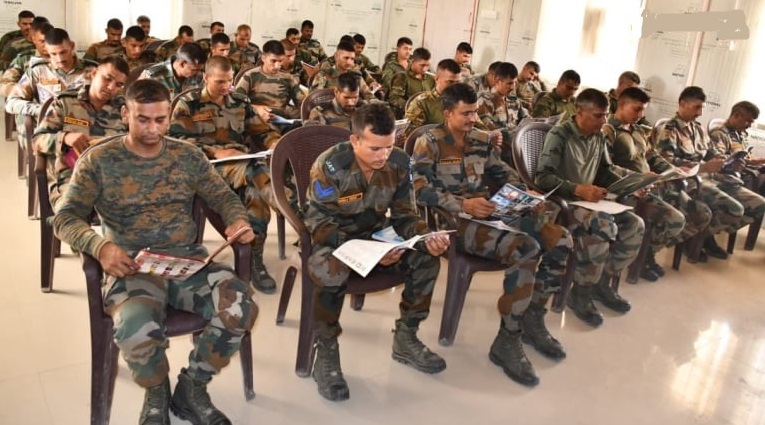 Agneepath Scheme replaced with Sainik Samman Scheme 2024, Defence Minister Rajnath Singh Relaunched Agniveer Scheme
Agneepath Scheme replaced with Sainik Samman Scheme 2024, Defence Minister Rajnath Singh Relaunched Agniveer Scheme
-
 China's Latest DF-31AG ICBM Test: A Strategic Leap in Global Missile Capabilities
China's Latest DF-31AG ICBM Test: A Strategic Leap in Global Missile Capabilities
-
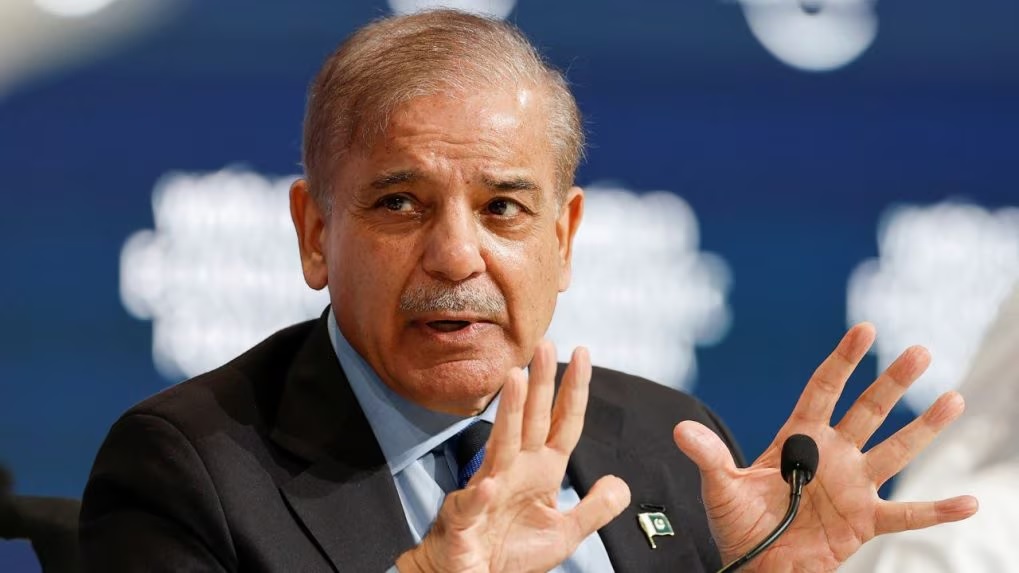 Pakistan Announces 15% Increase in Defence Budget for 2024-25 Amid Economic Crisis
Pakistan Announces 15% Increase in Defence Budget for 2024-25 Amid Economic Crisis
-
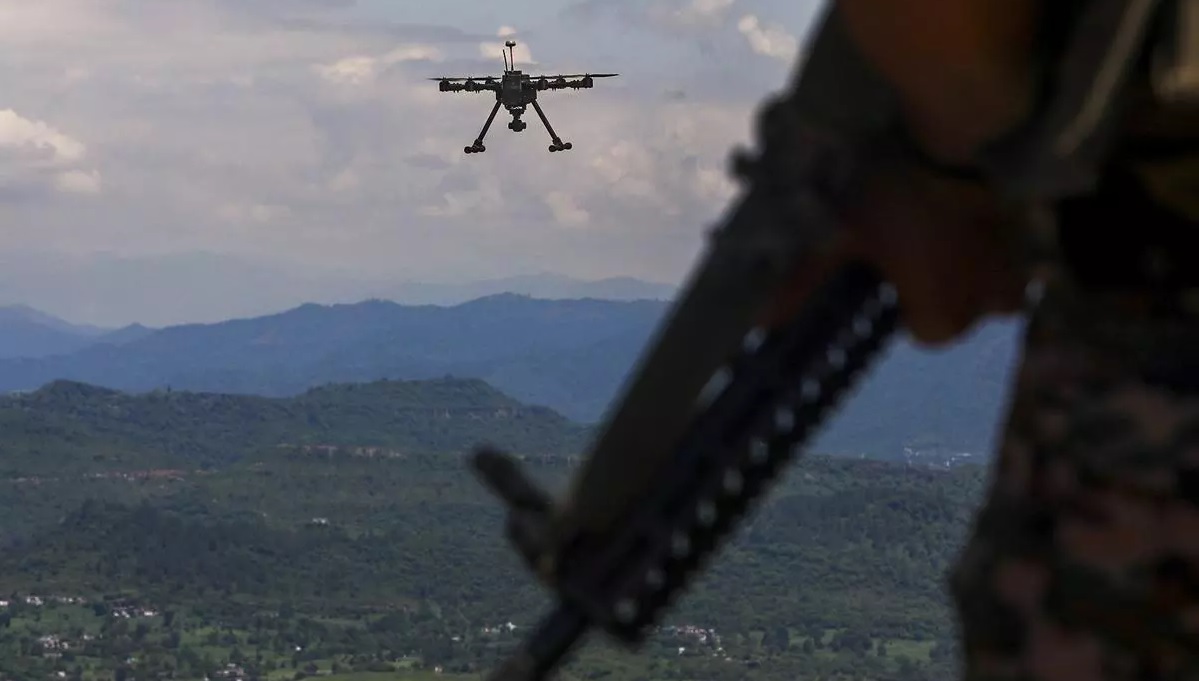 India's Defence Ministry Warns Against Chinese Parts in Military Drones Amid Security Concerns
India's Defence Ministry Warns Against Chinese Parts in Military Drones Amid Security Concerns
-
 China’s Super Radar Detects Mysterious Plasma Bubble Over Giza Pyramids
China’s Super Radar Detects Mysterious Plasma Bubble Over Giza Pyramids
-
 India's Indigenous Kaveri Engine Program with New Focus on Thrust and Performance
India's Indigenous Kaveri Engine Program with New Focus on Thrust and Performance
-
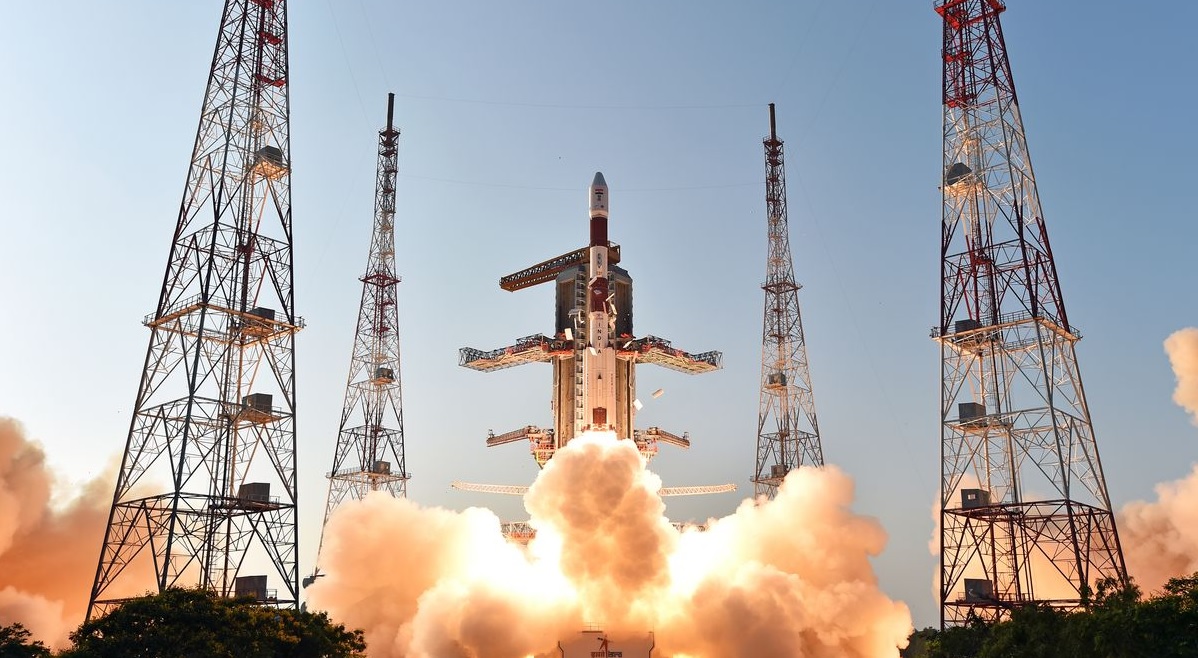 Isro Draws up Ambitious Plan for 2024, says will Launch at Least 12 Missions
Isro Draws up Ambitious Plan for 2024, says will Launch at Least 12 Missions
-
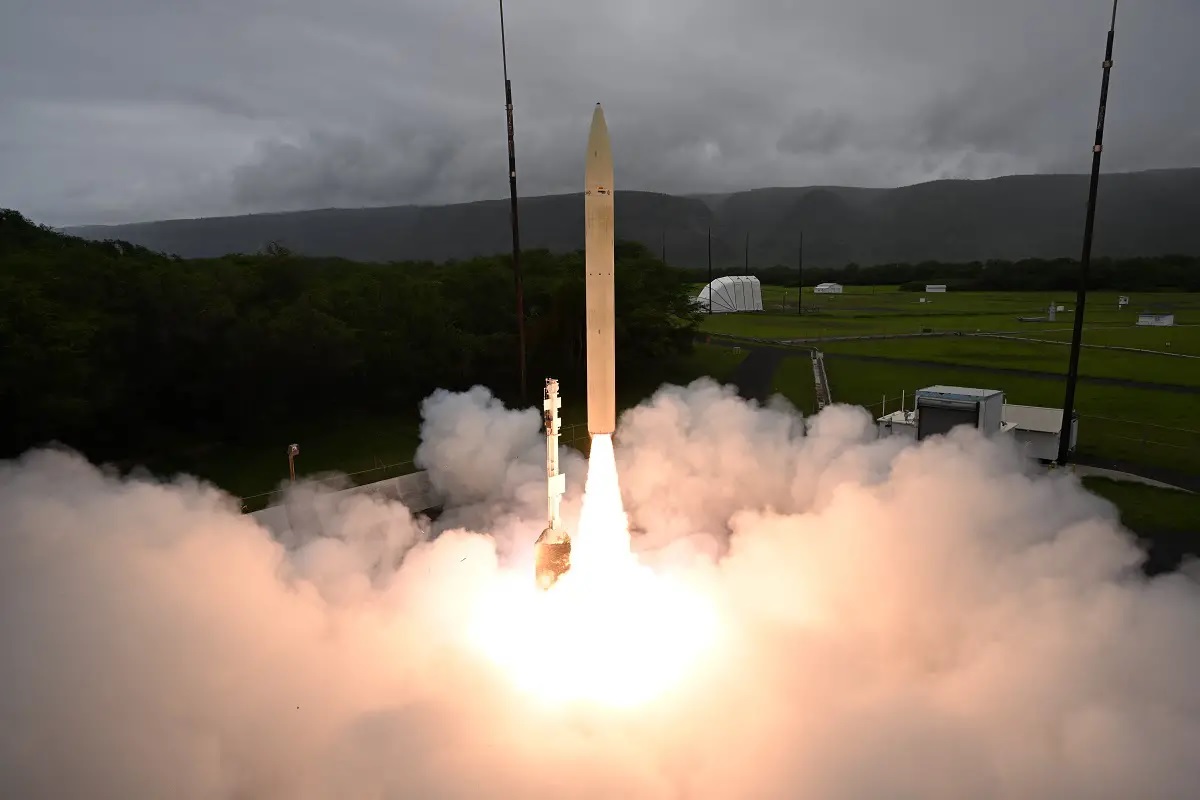 Successful Hypersonic Missile Test by U.S. Department of Defense
Successful Hypersonic Missile Test by U.S. Department of Defense
Top Trending in 4 Days
-
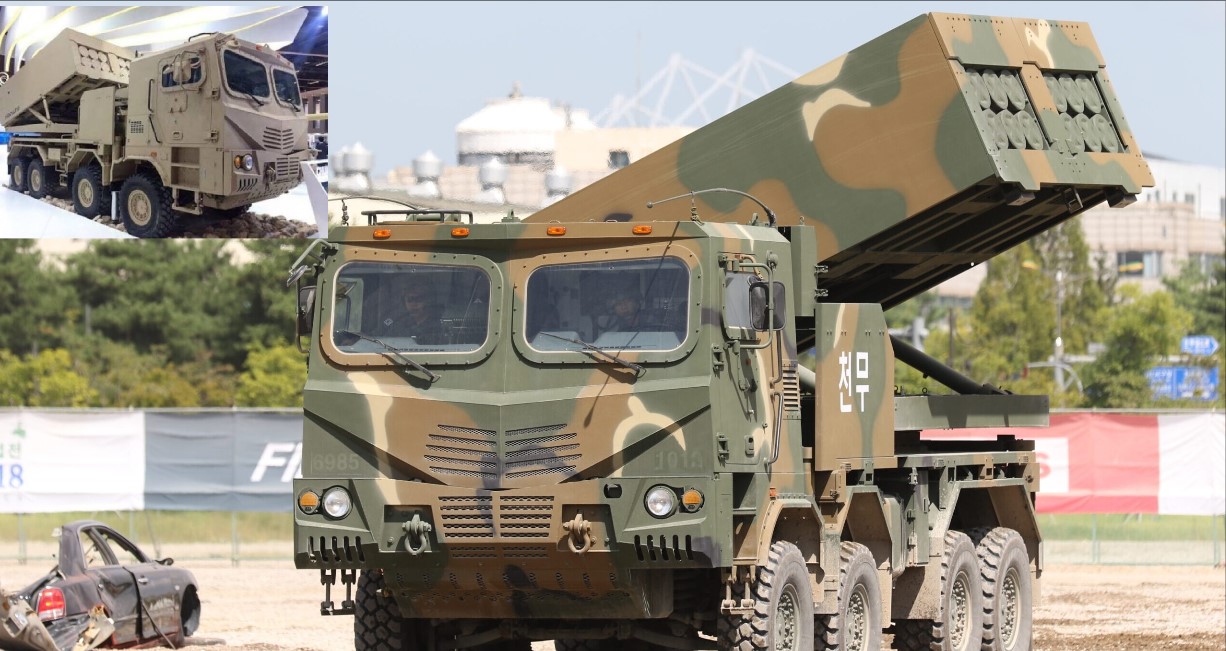 South Korea’s K239 Chunmoo Rocket Artillery Spotted in Saudi Arabia
South Korea’s K239 Chunmoo Rocket Artillery Spotted in Saudi Arabia
-
 Russia Launches Massive Missile and Drone Attacks on Ukraine's infrastructure
Russia Launches Massive Missile and Drone Attacks on Ukraine's infrastructure
-
 Peru to Acquire South Korea's K2 Black Panther Tanks
Peru to Acquire South Korea's K2 Black Panther Tanks
-
 Russia Reports Interception of 44 Ukrainian Drones Including 20 over Novgorod region
Russia Reports Interception of 44 Ukrainian Drones Including 20 over Novgorod region
-
 Advancing Space Tech for Defense: ICEYE Leads Finland's F-35 Industrial Participation Program
Advancing Space Tech for Defense: ICEYE Leads Finland's F-35 Industrial Participation Program
-
 Russia Fires Intercontinental Ballistic Missile at Ukraine
Russia Fires Intercontinental Ballistic Missile at Ukraine
-
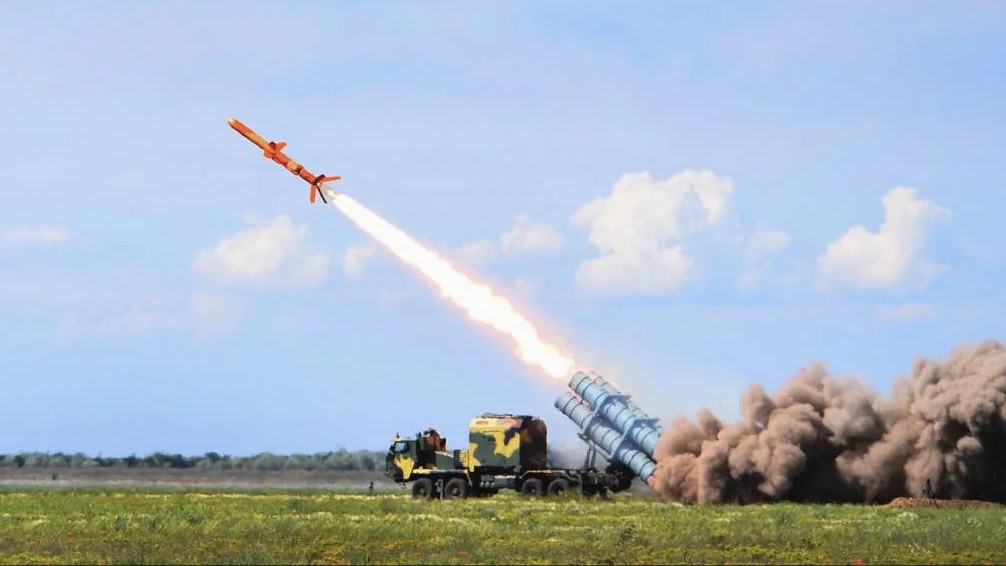 Ukraine Scales Up Neptune Missile Production: Over 100 Units Manufactured with Enhanced Range
Ukraine Scales Up Neptune Missile Production: Over 100 Units Manufactured with Enhanced Range
-
 Taiwan Strengthens Communication Resilience with LEO Satellites, Make War-Proof its communications networks
Taiwan Strengthens Communication Resilience with LEO Satellites, Make War-Proof its communications networks
